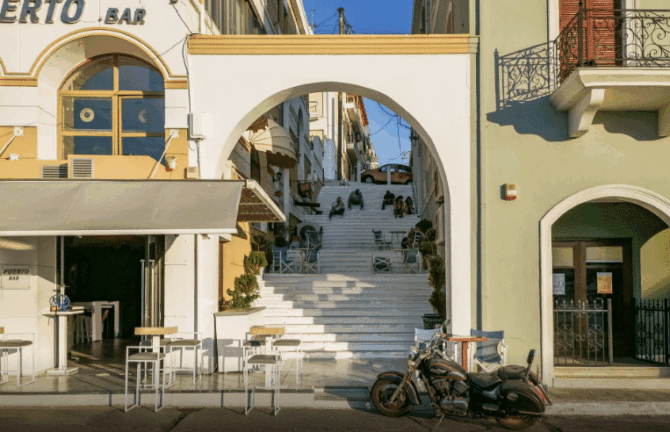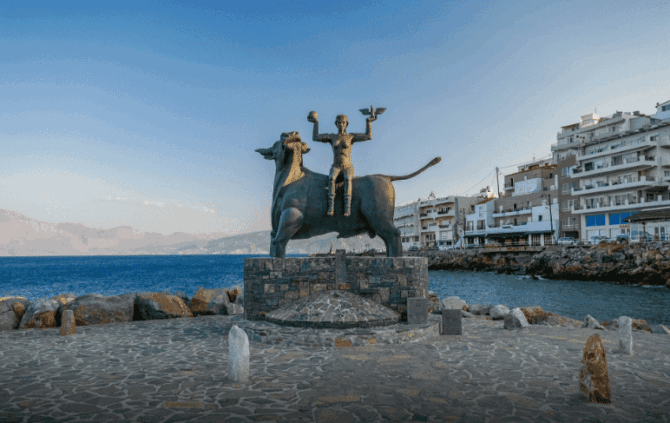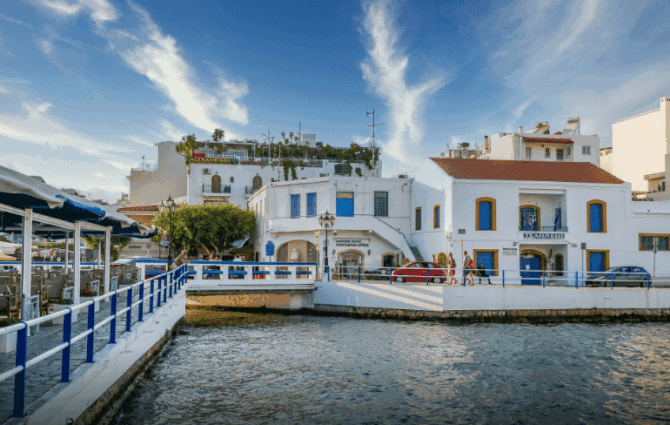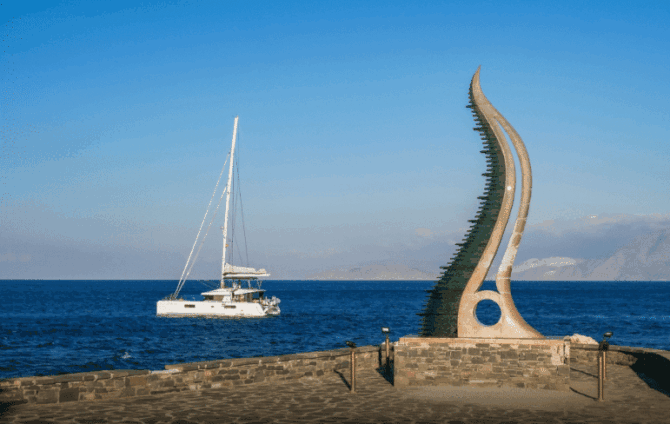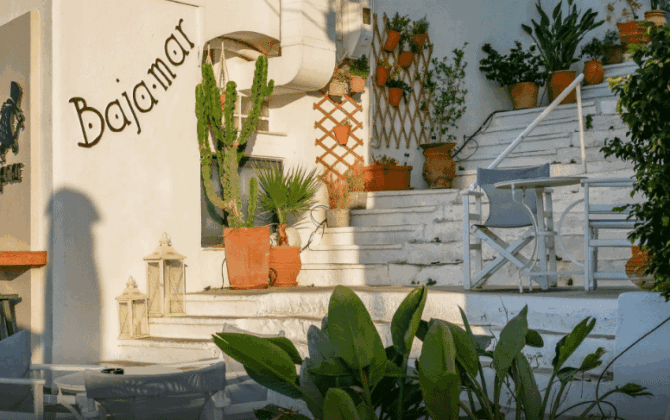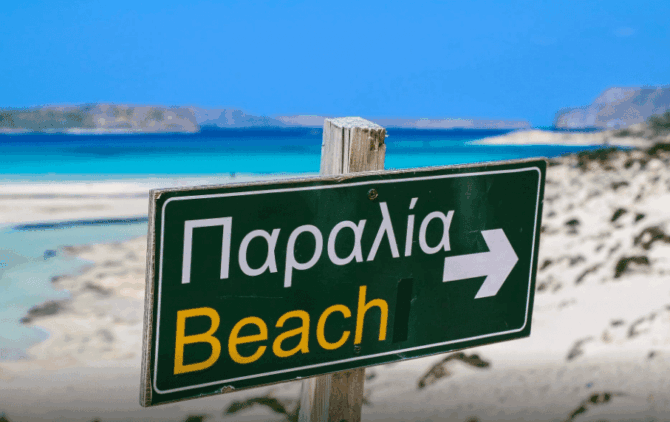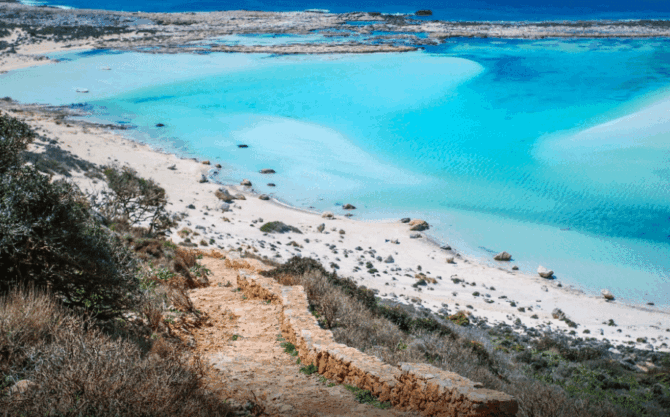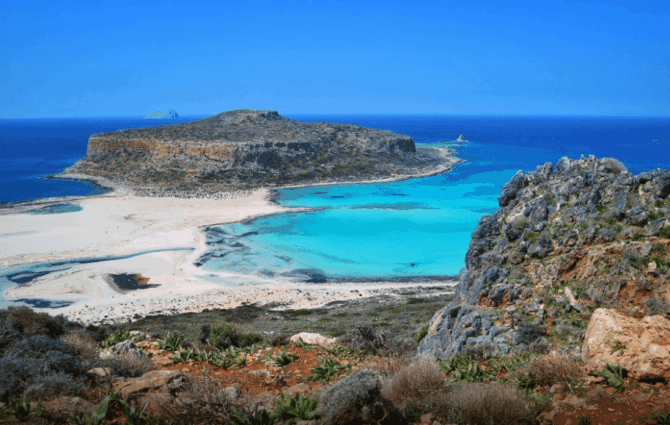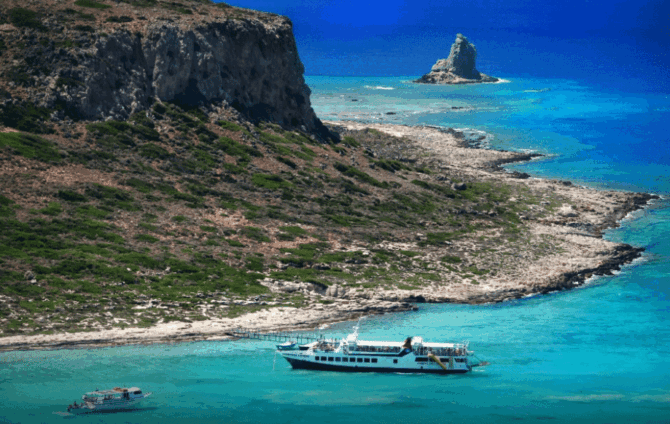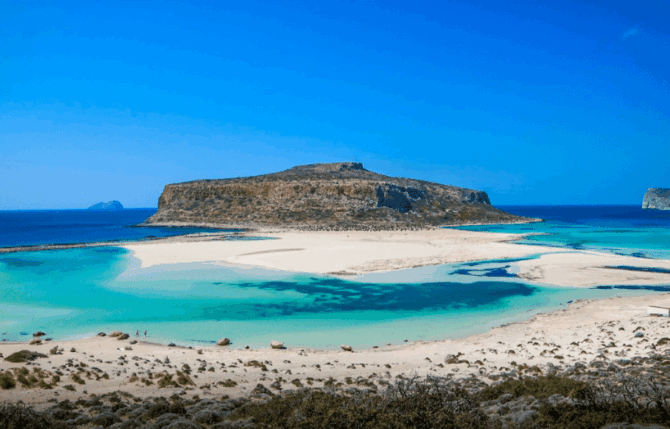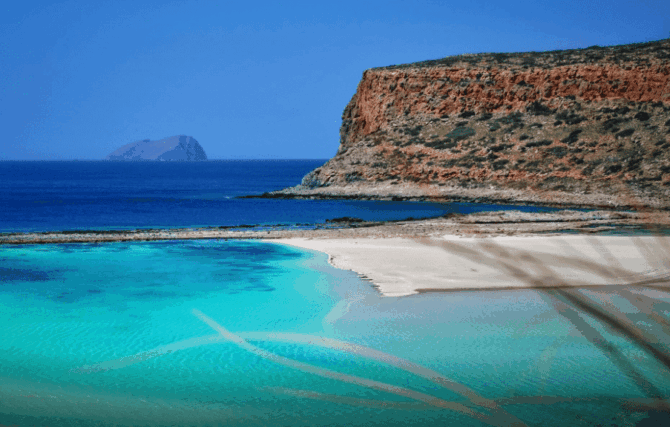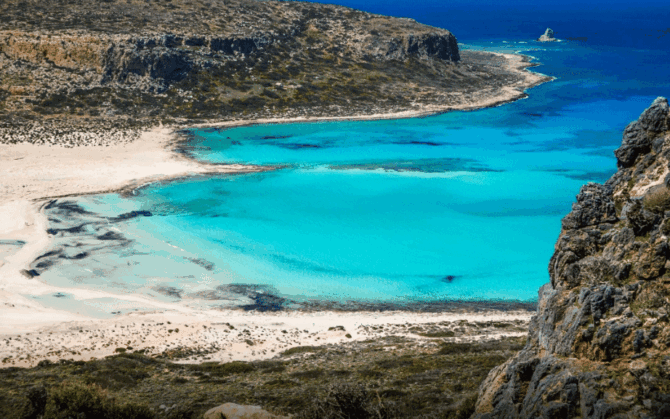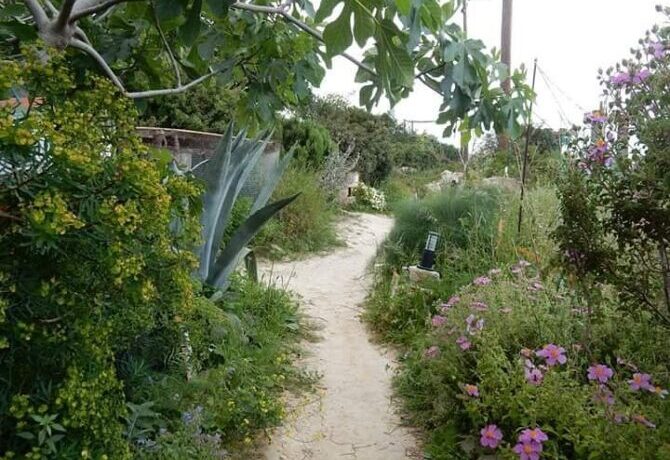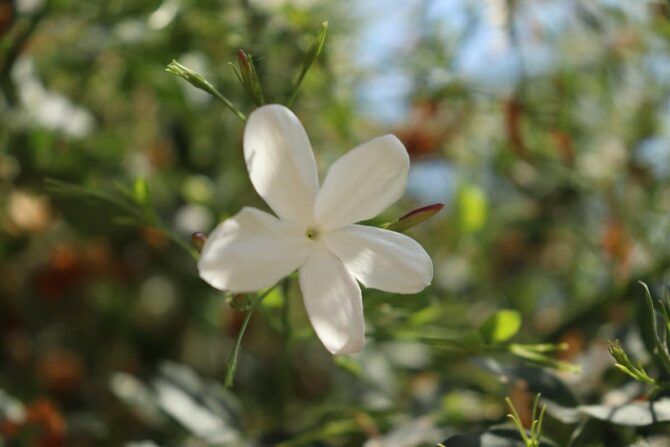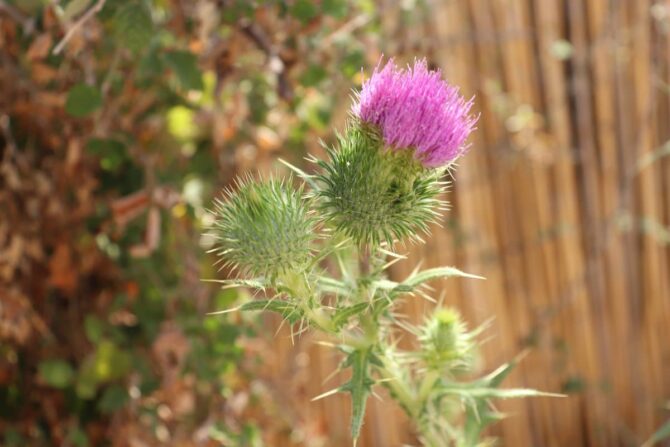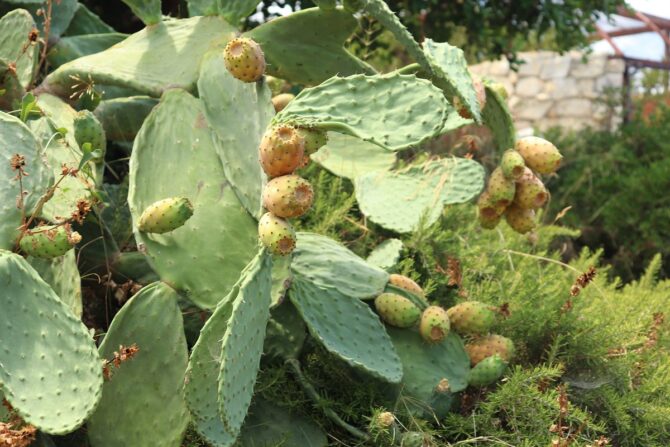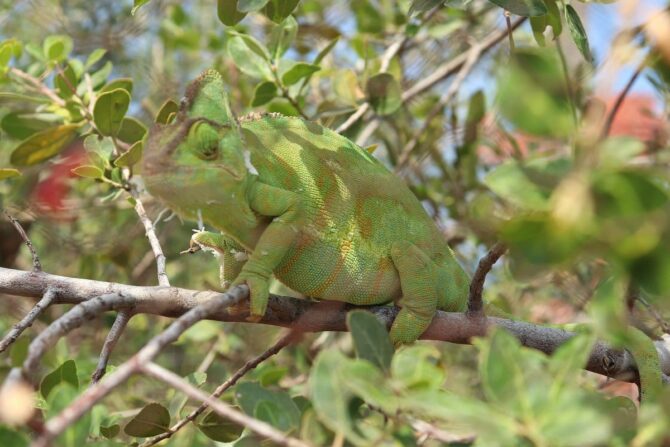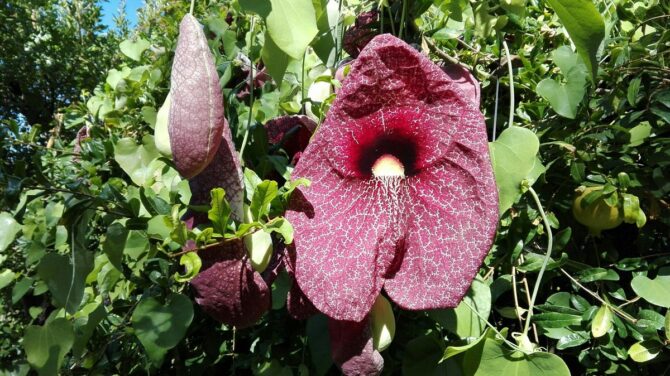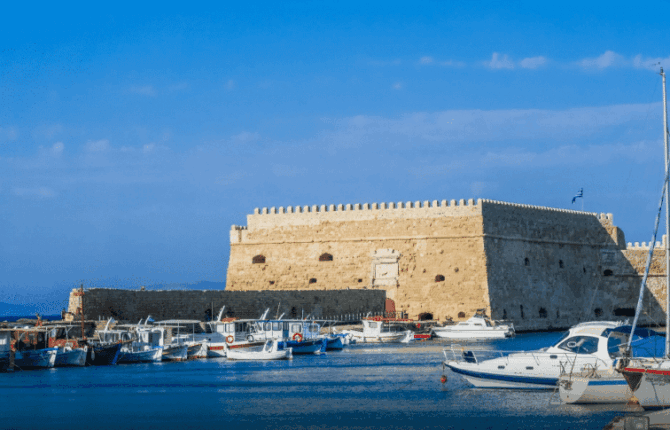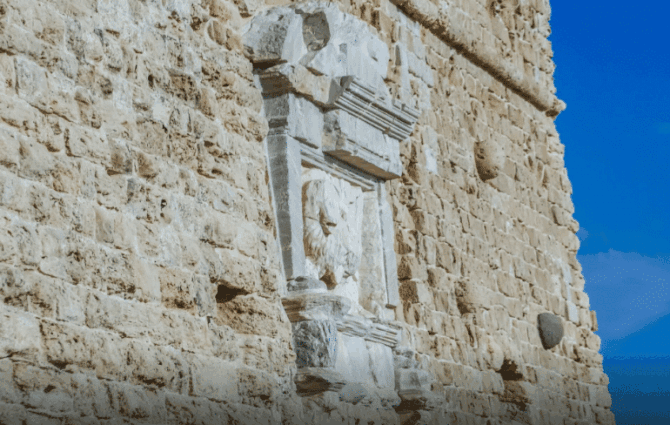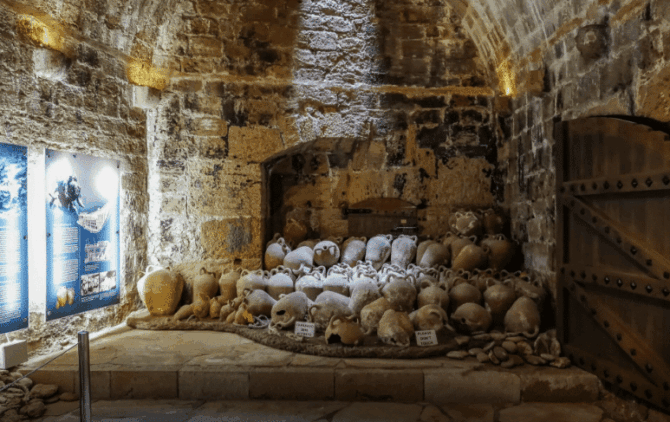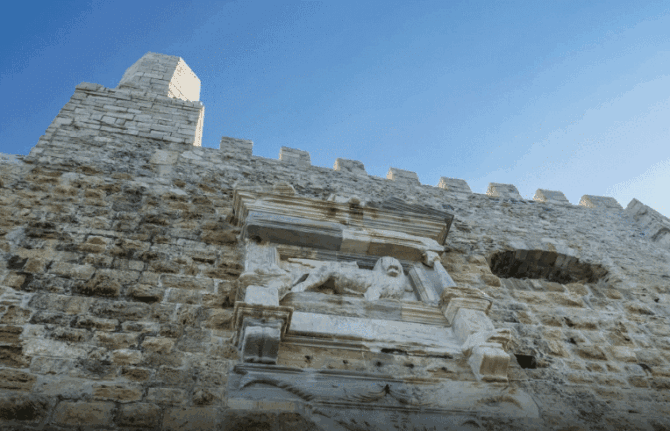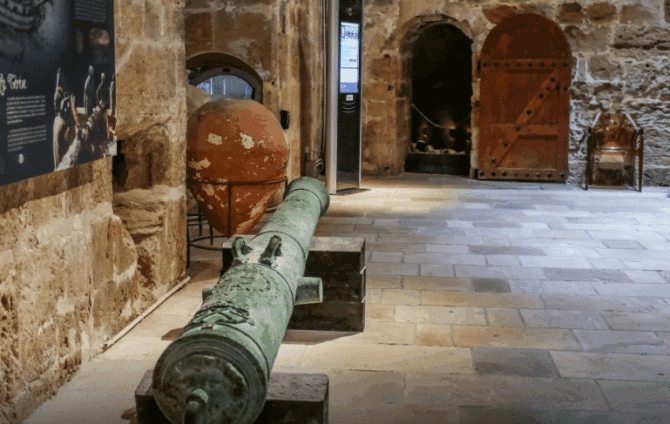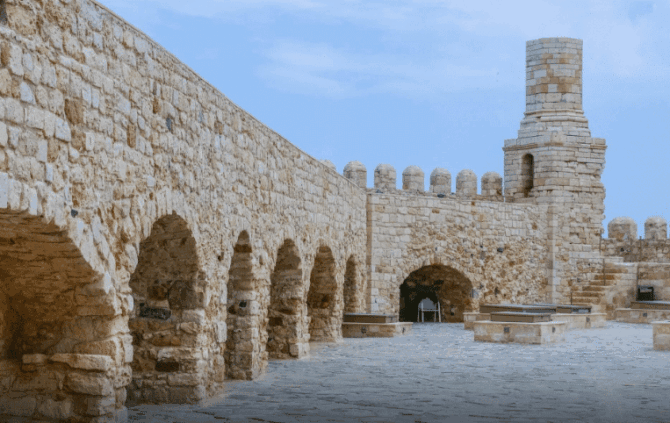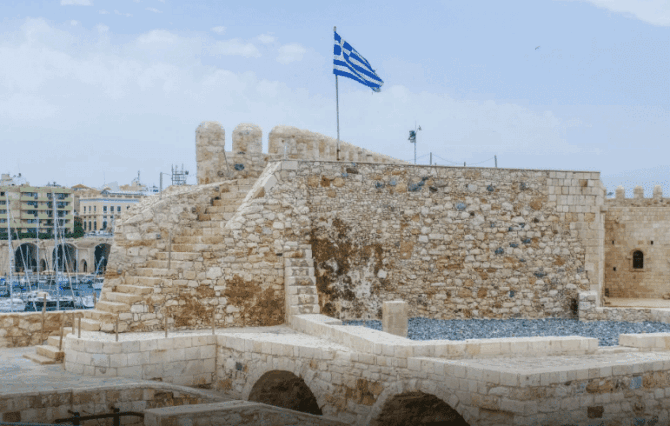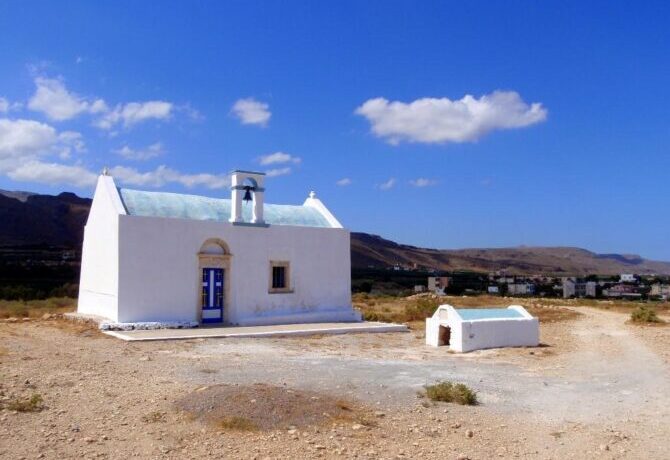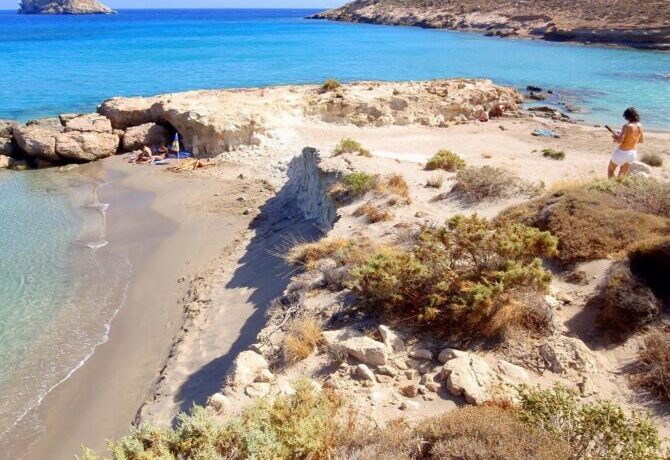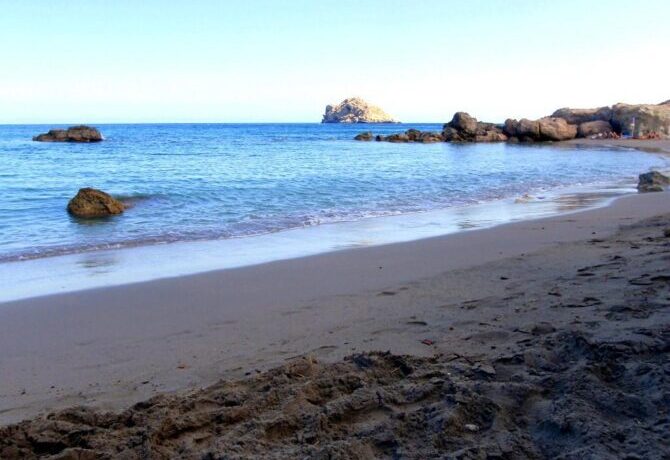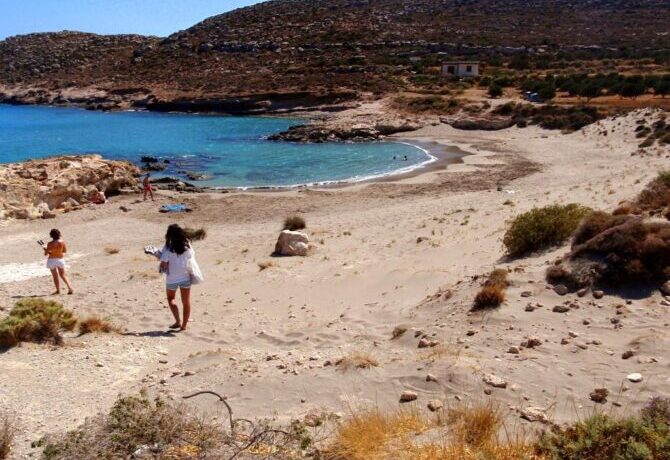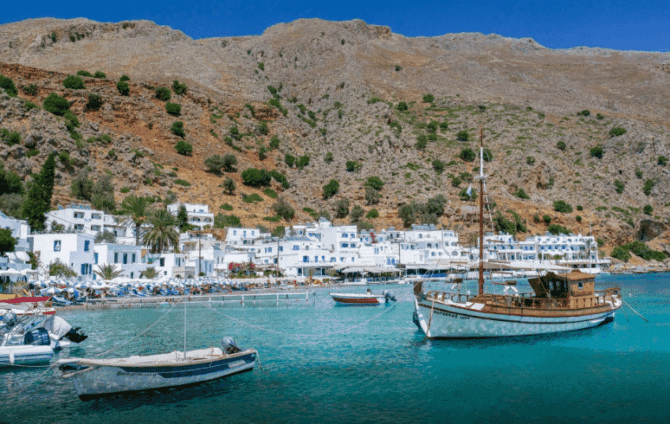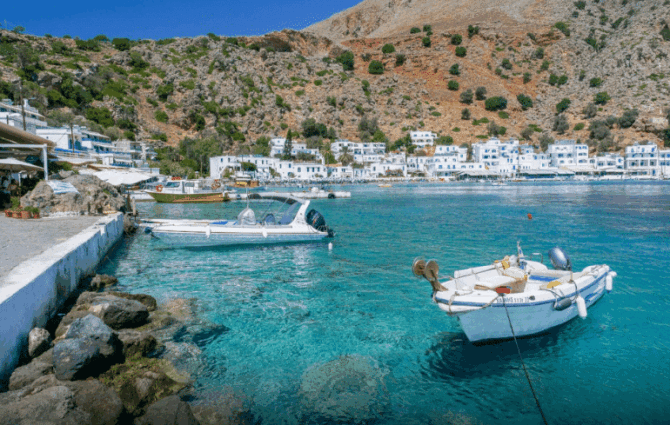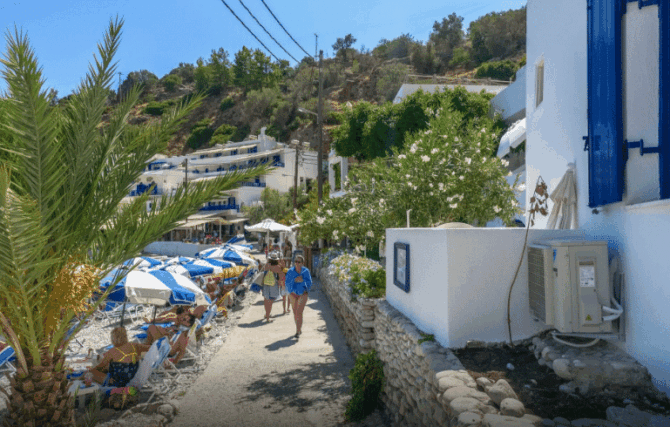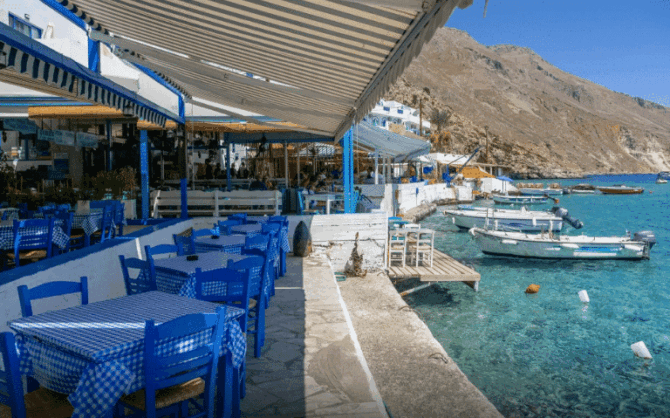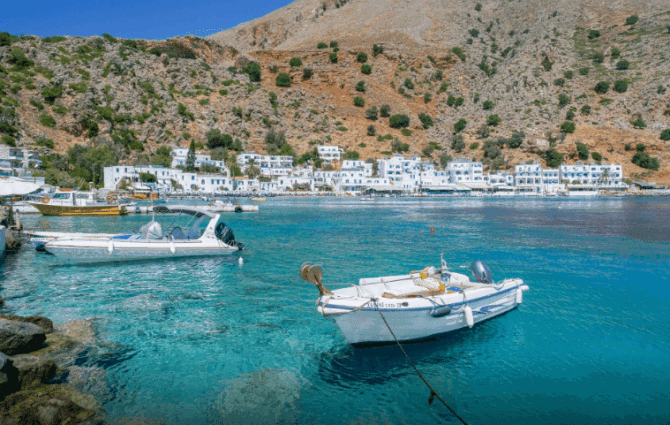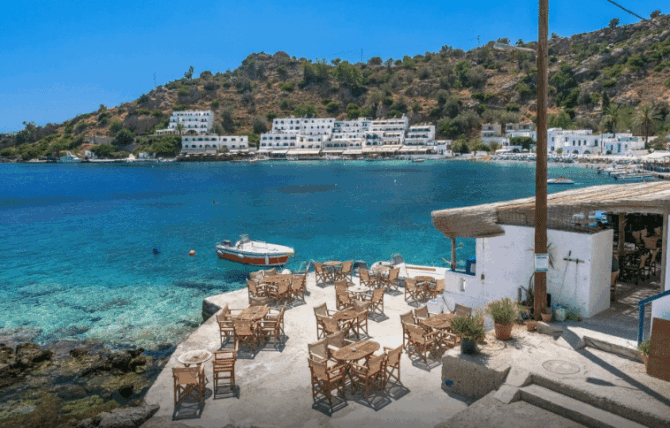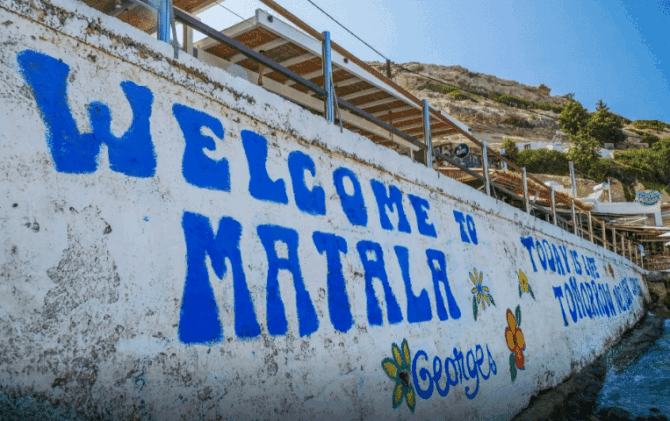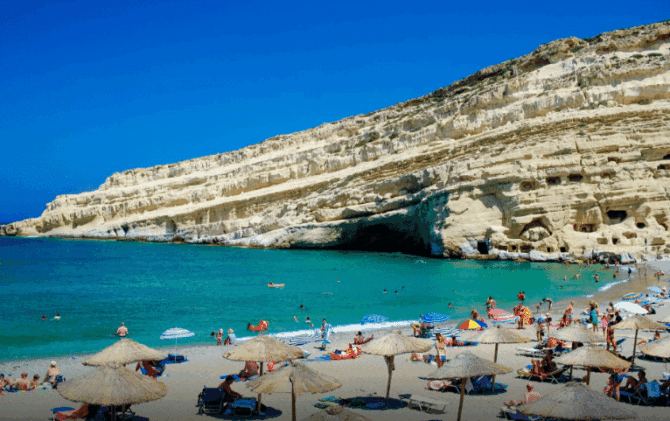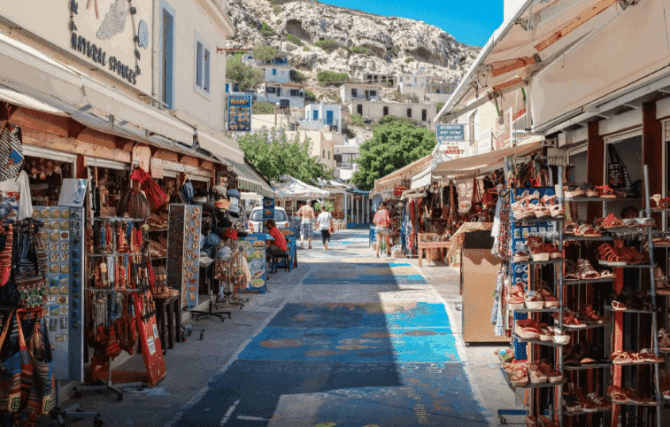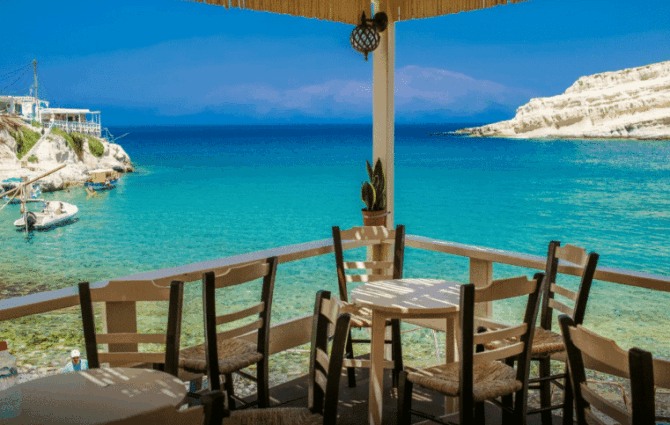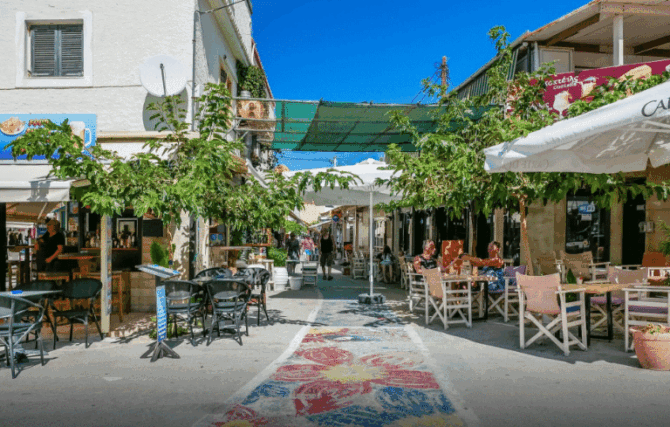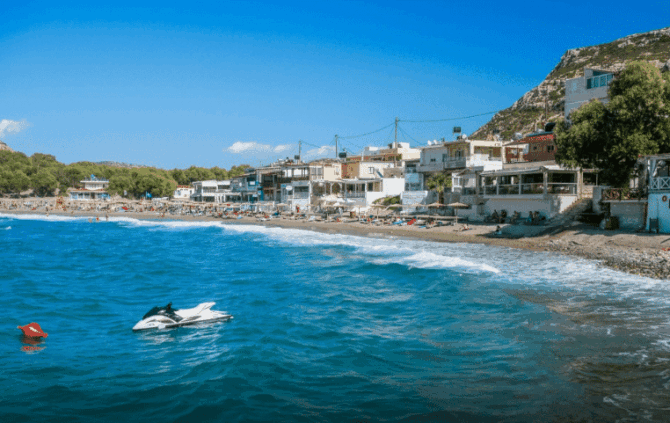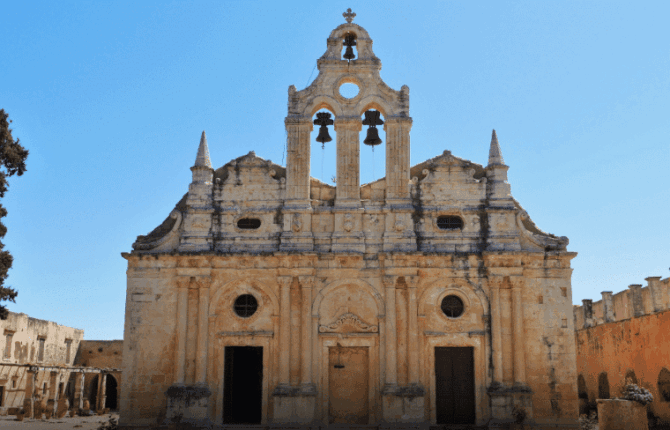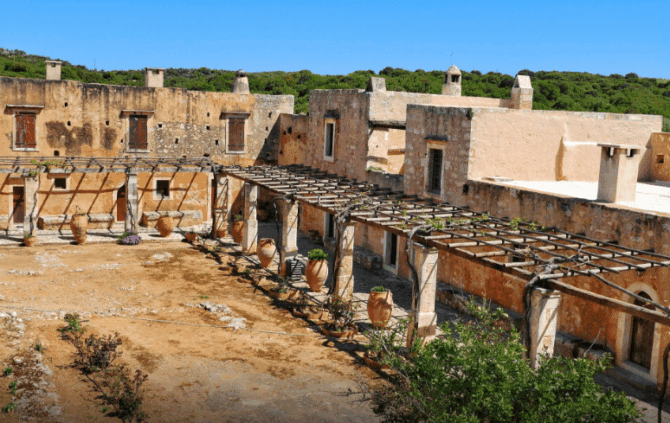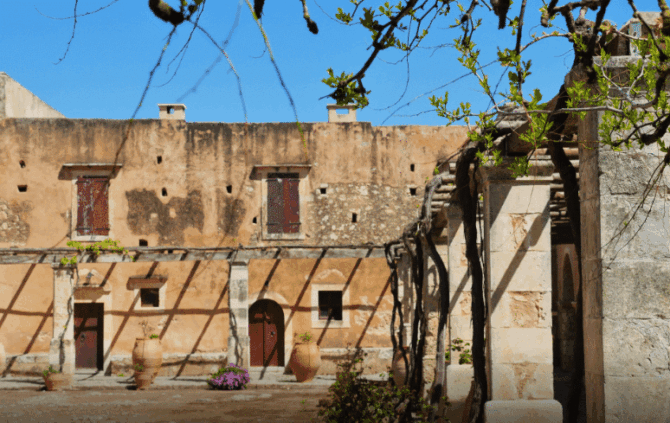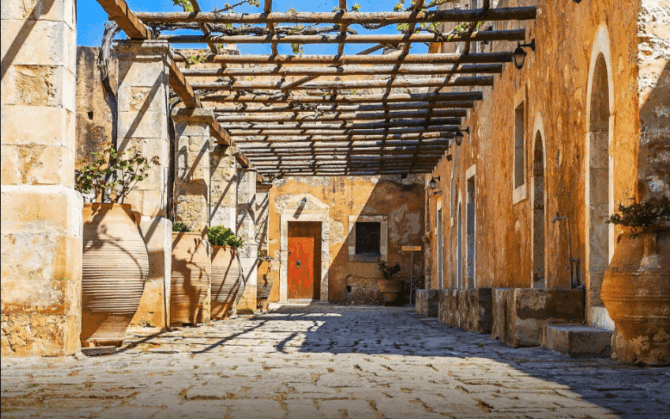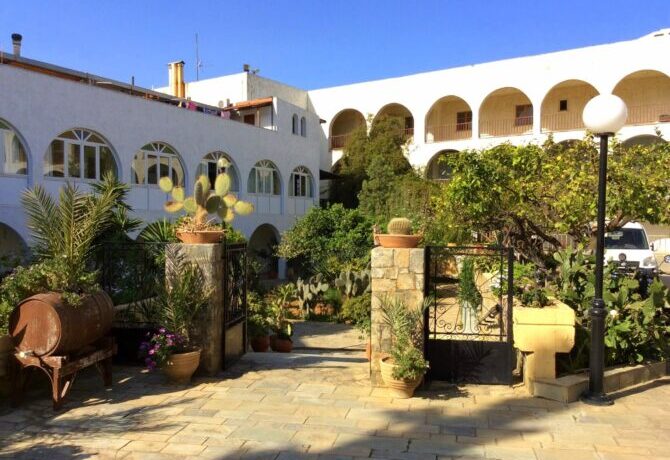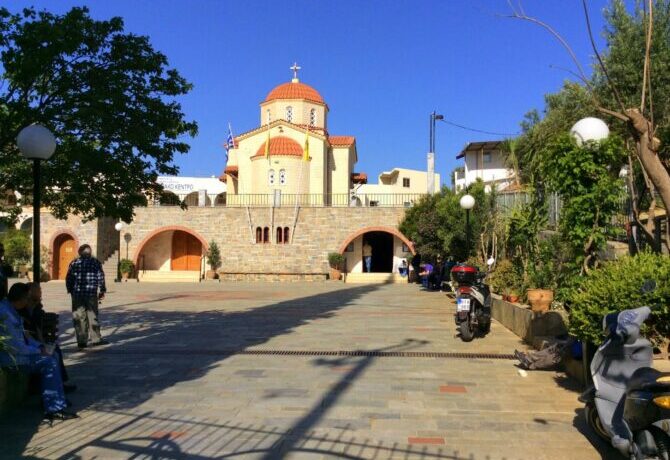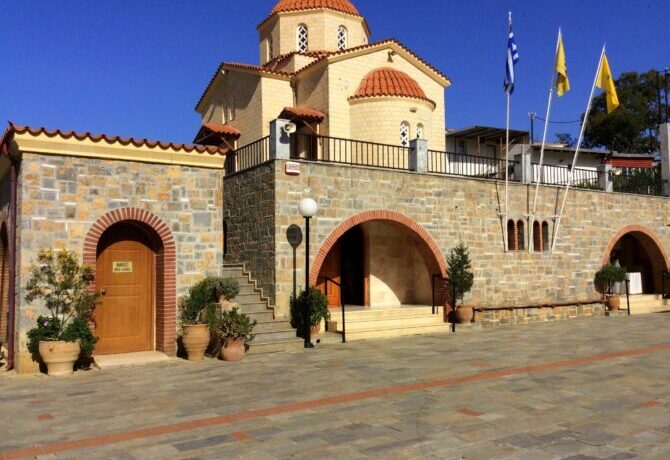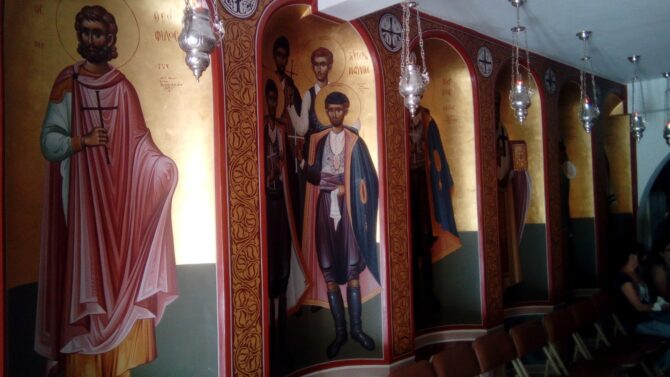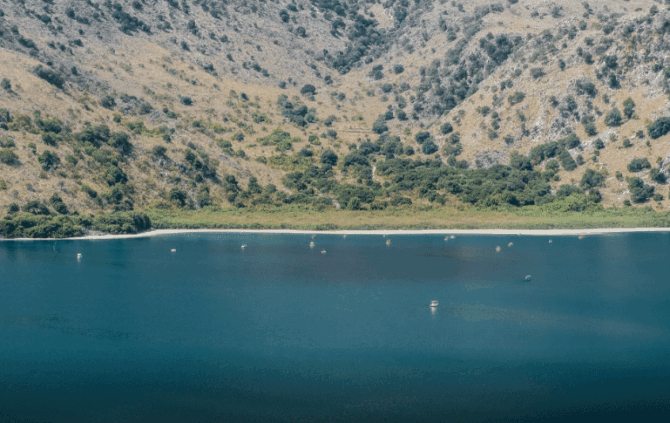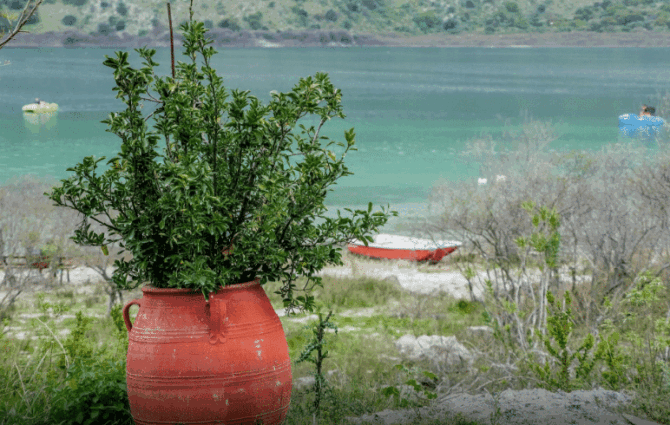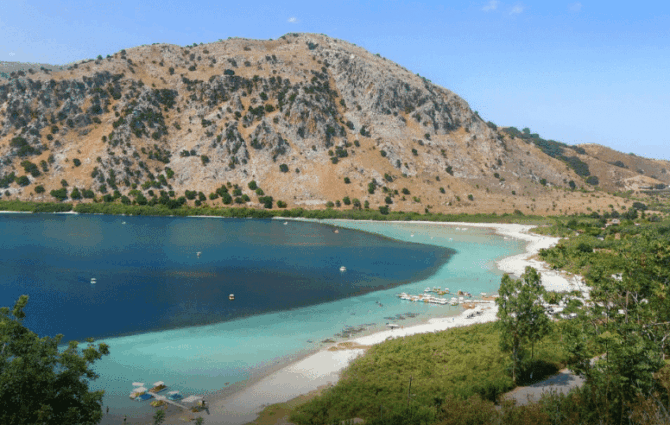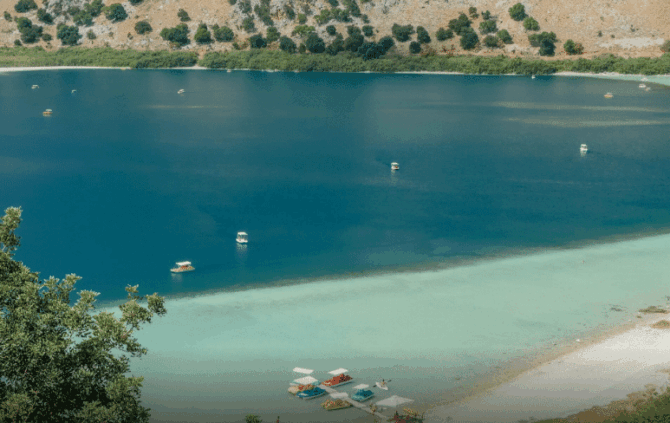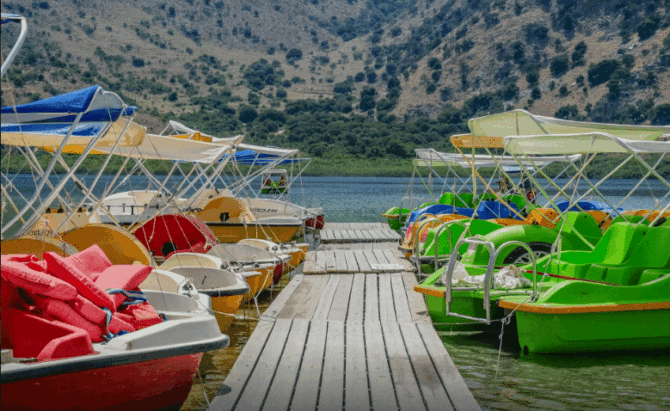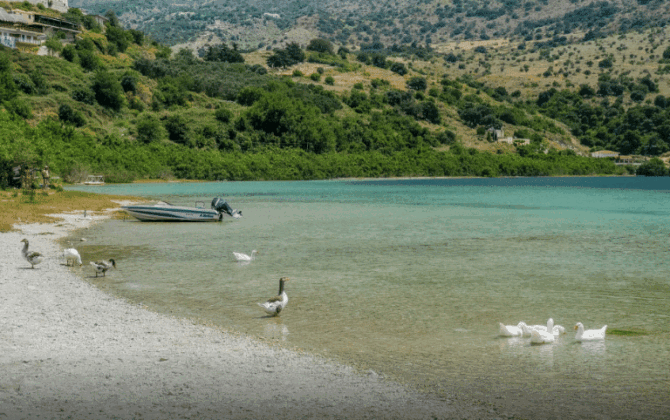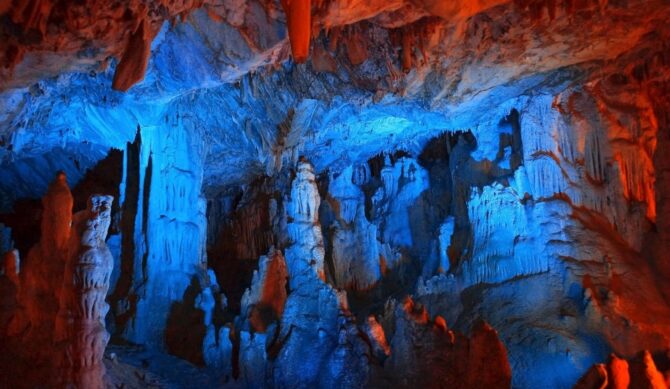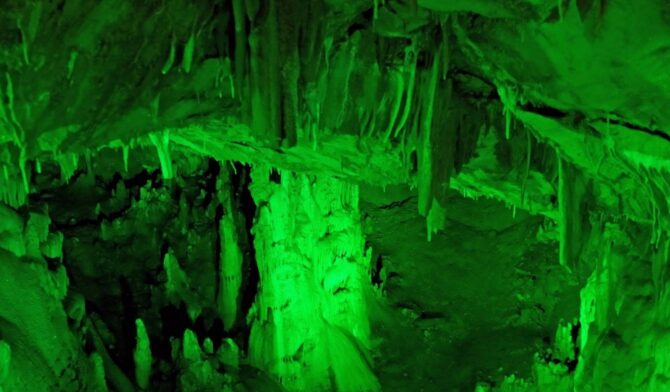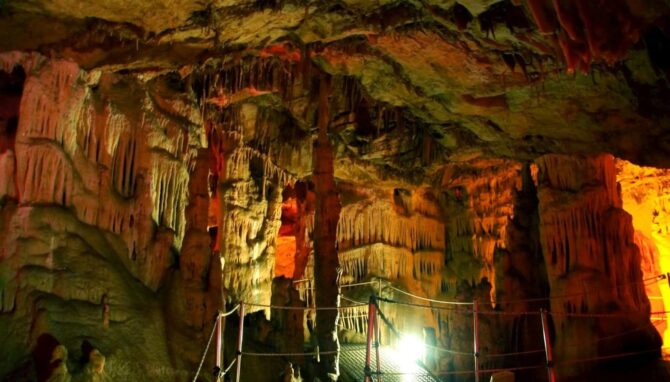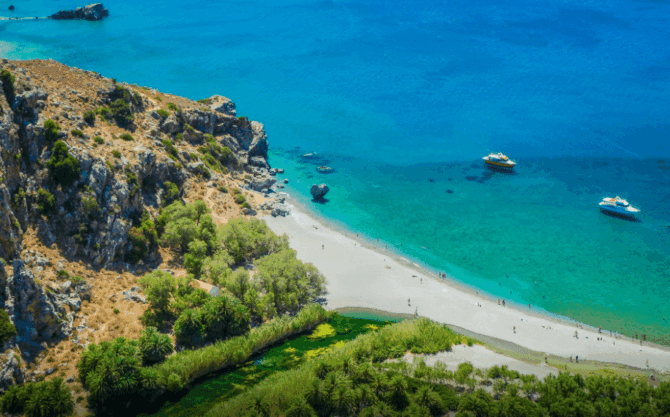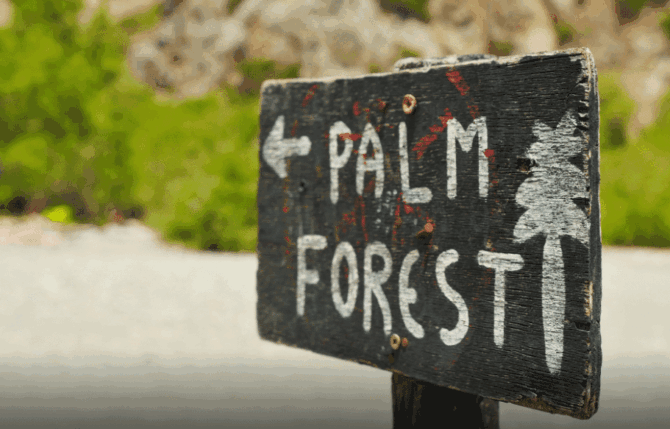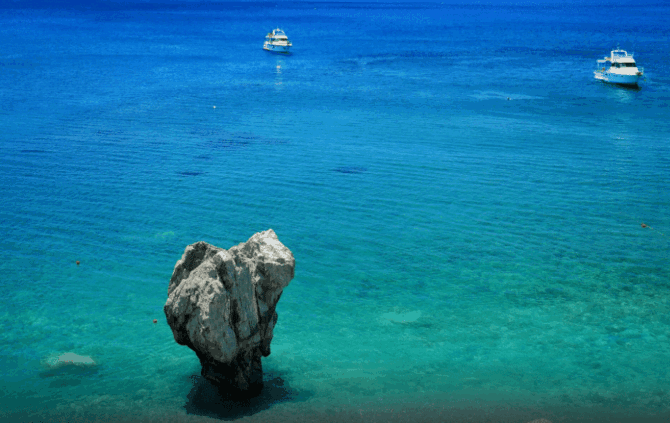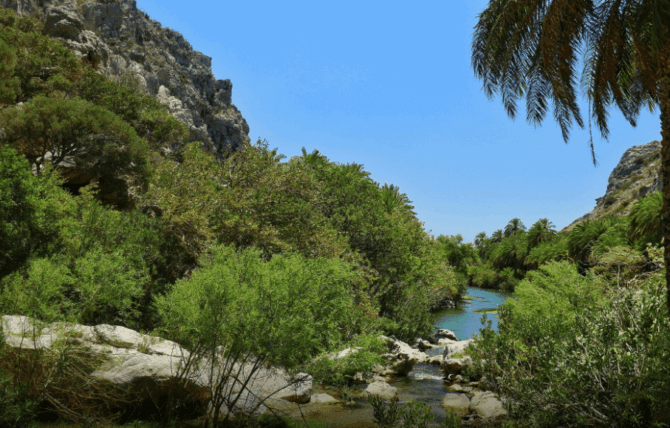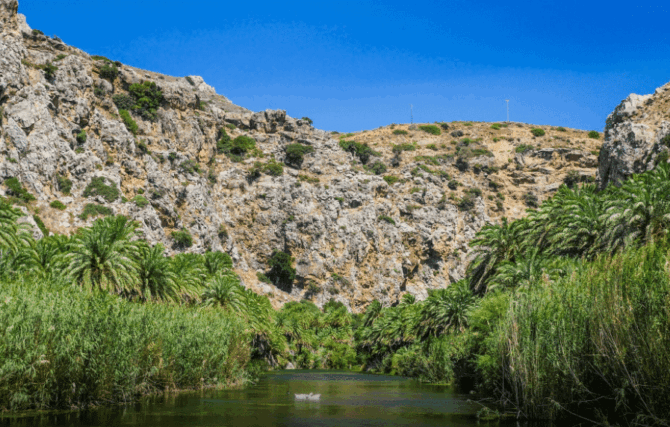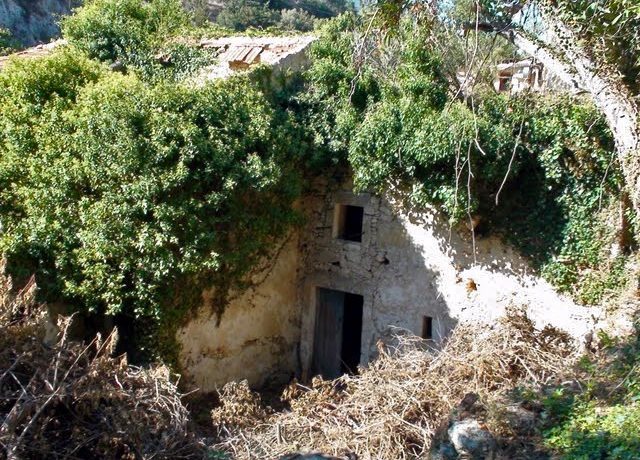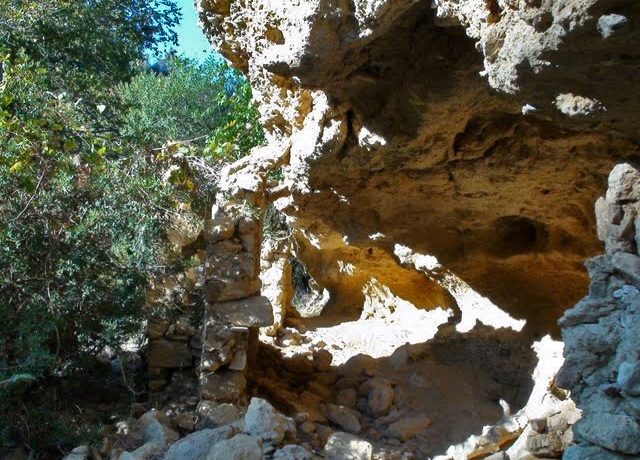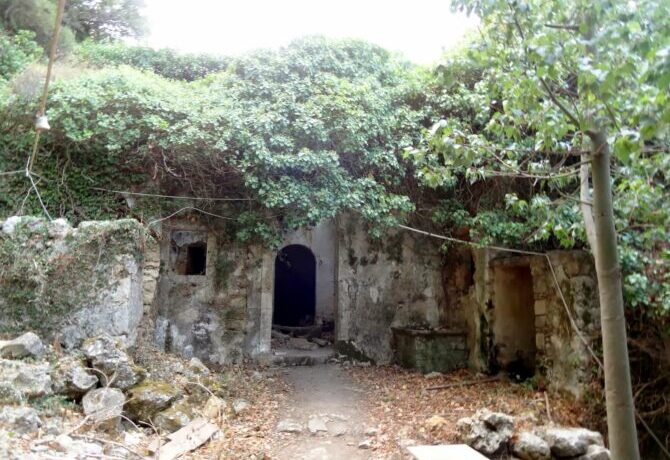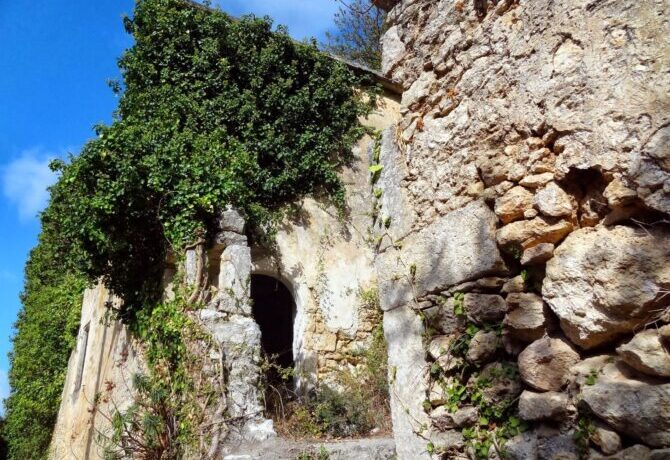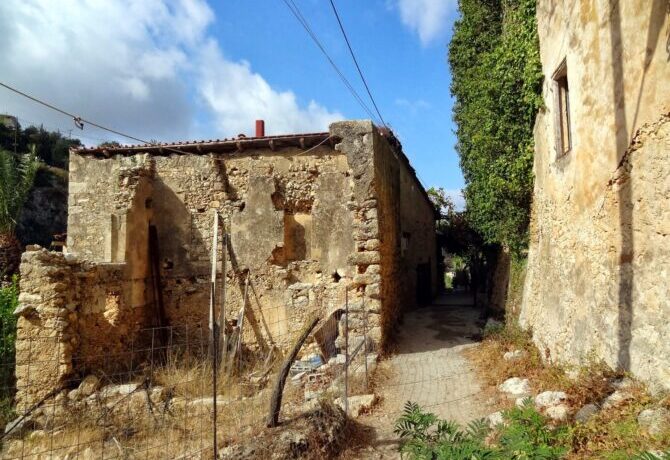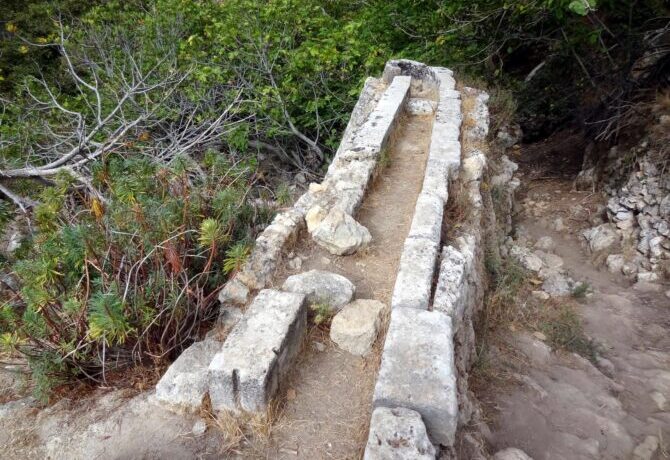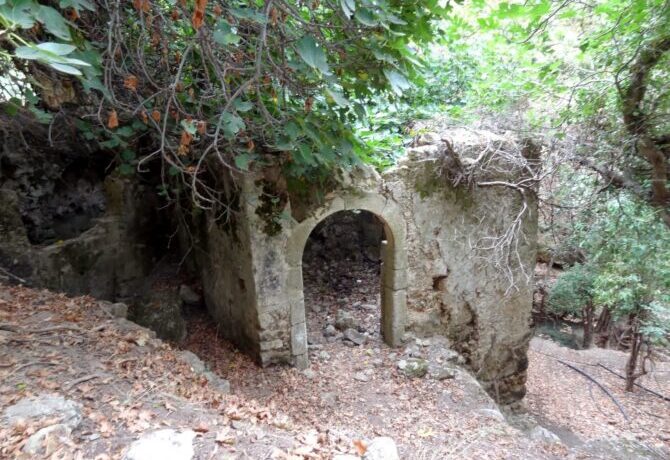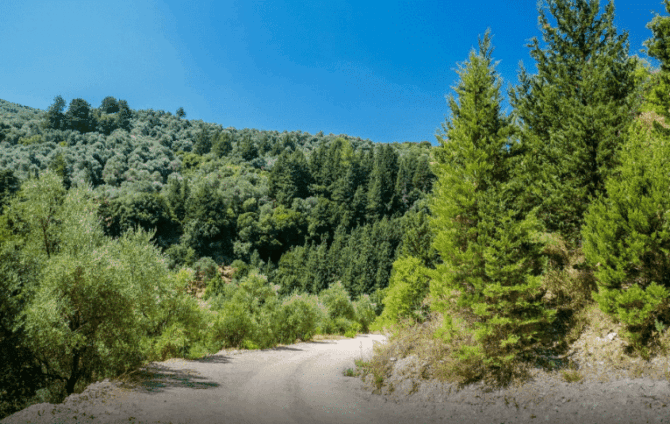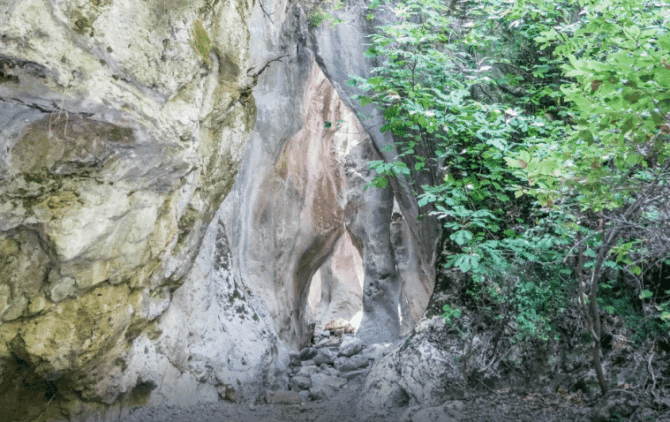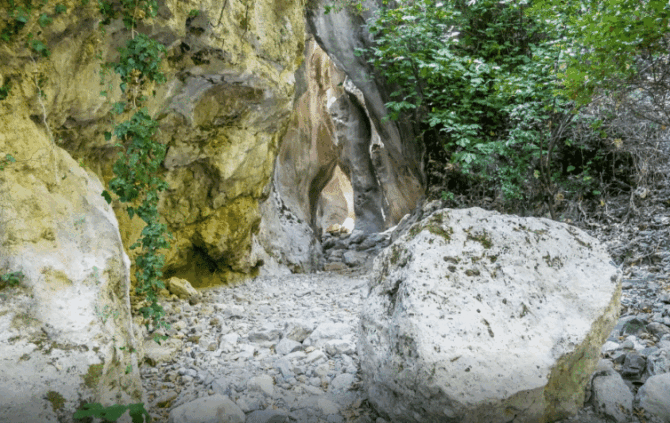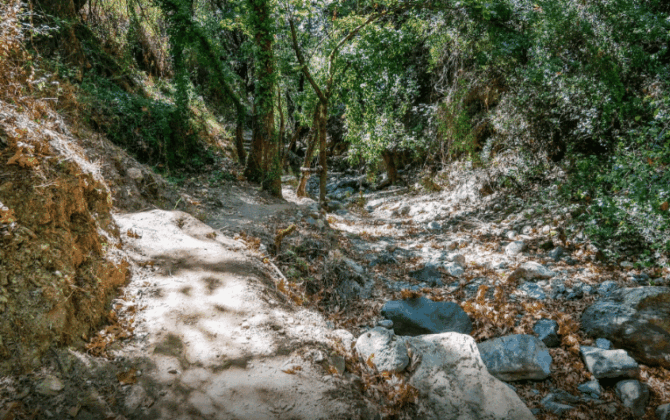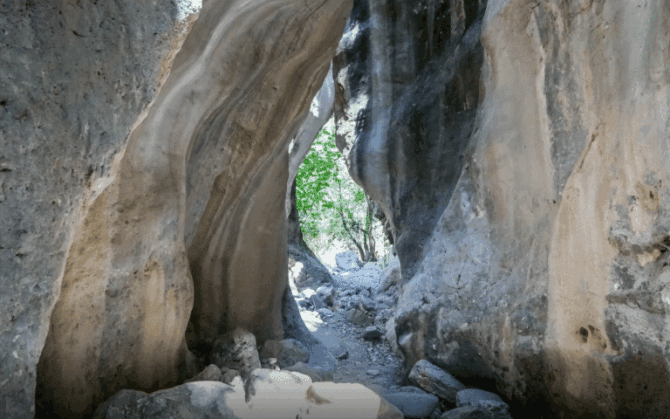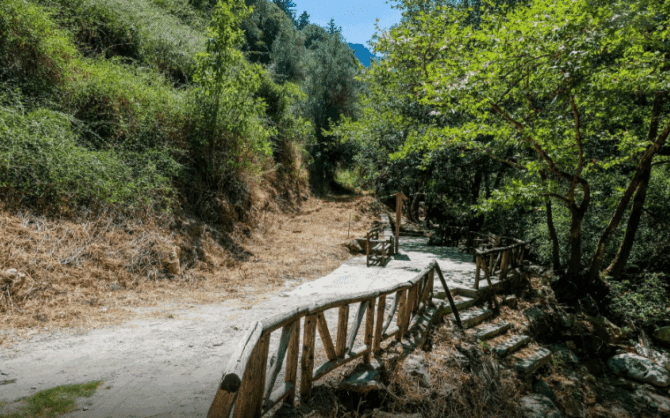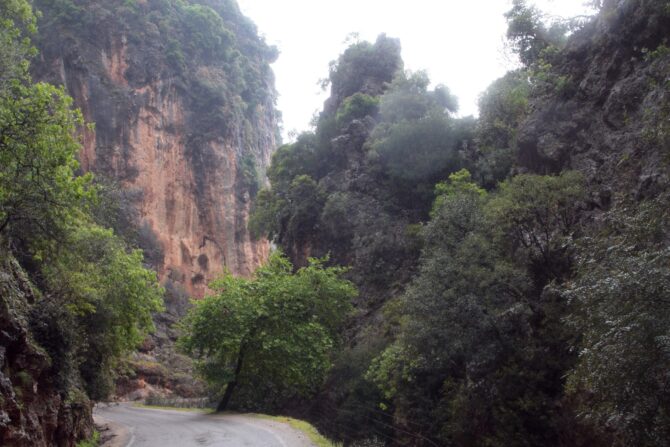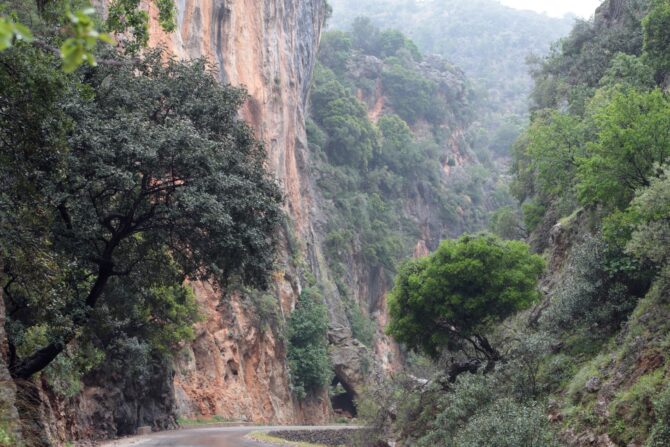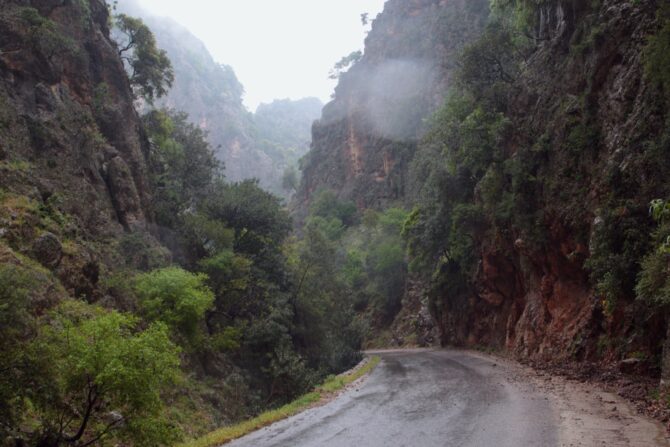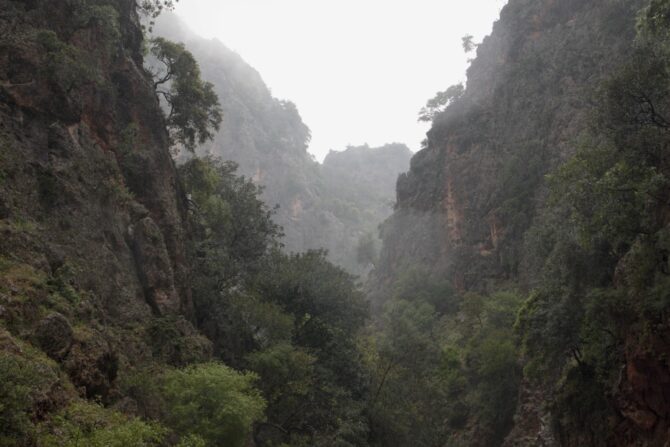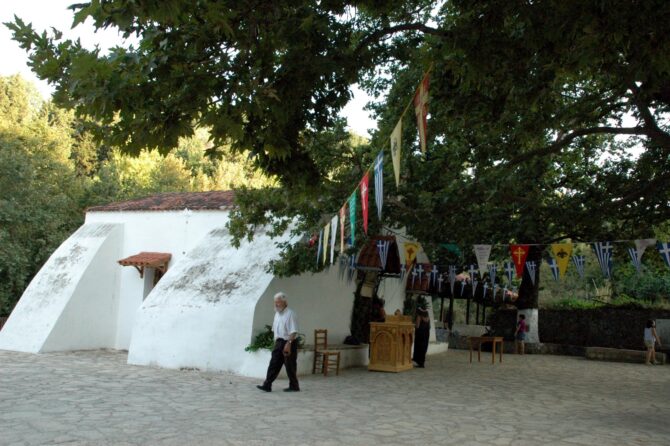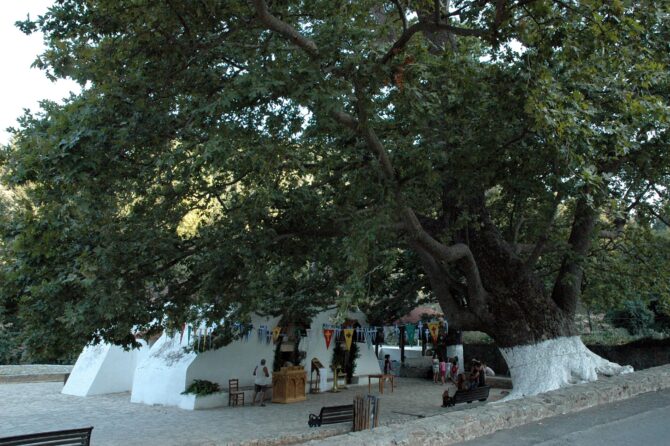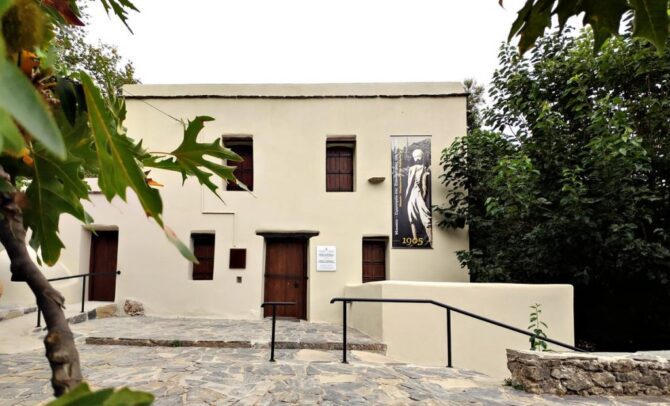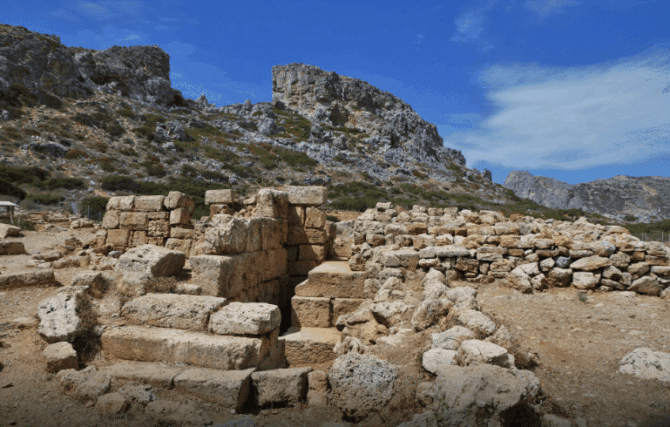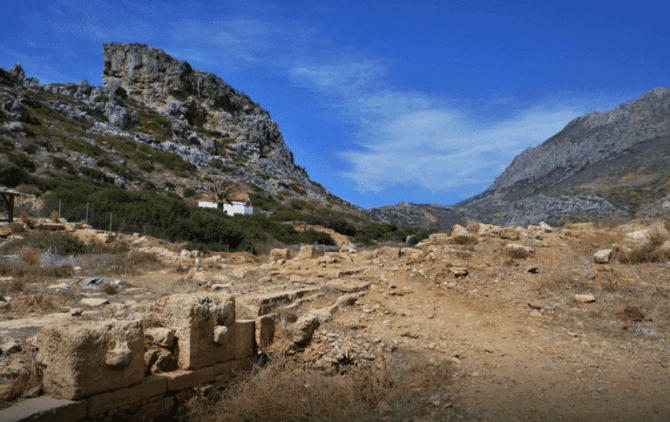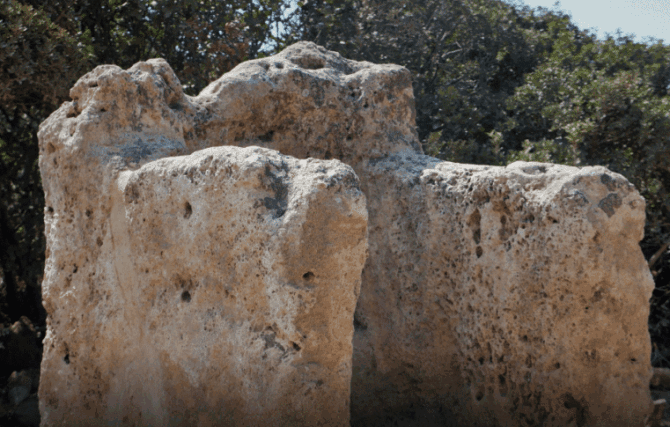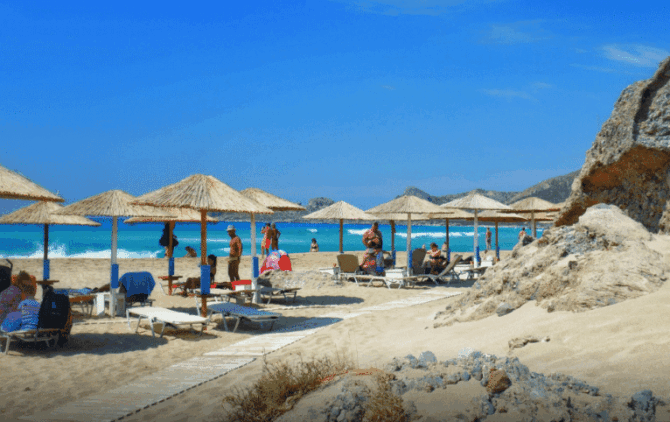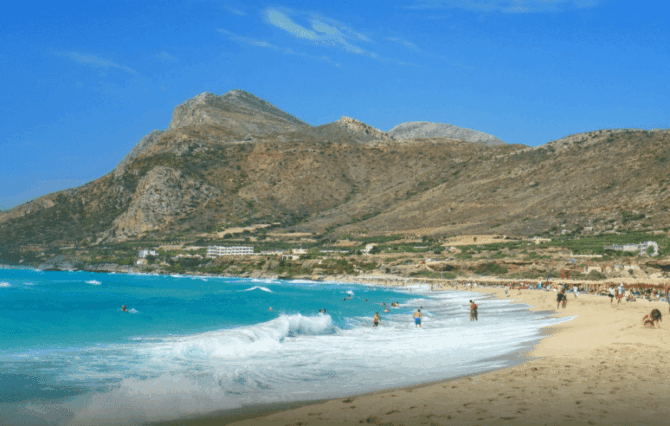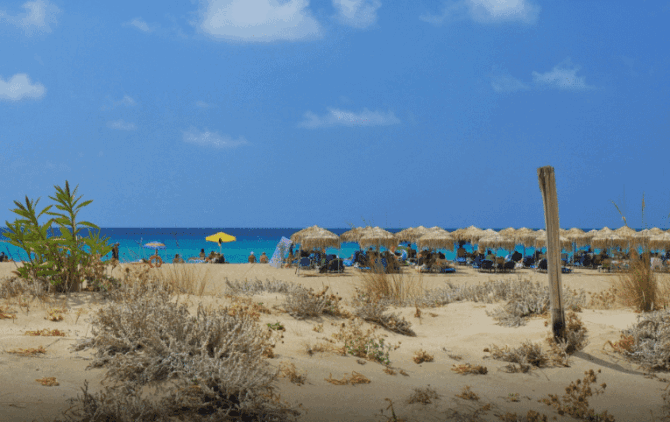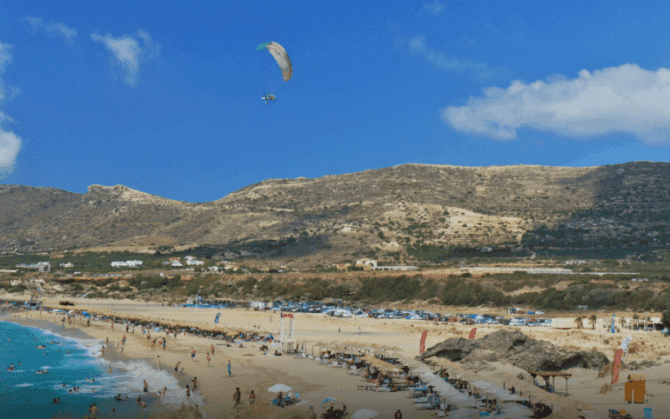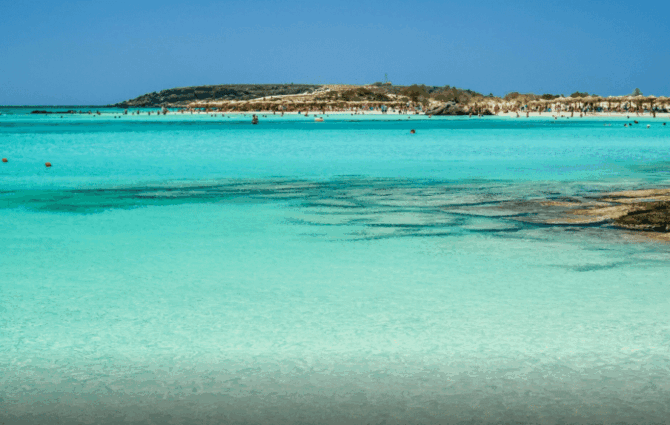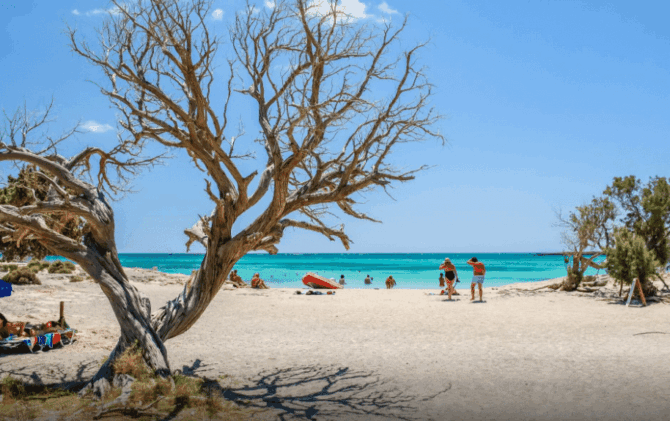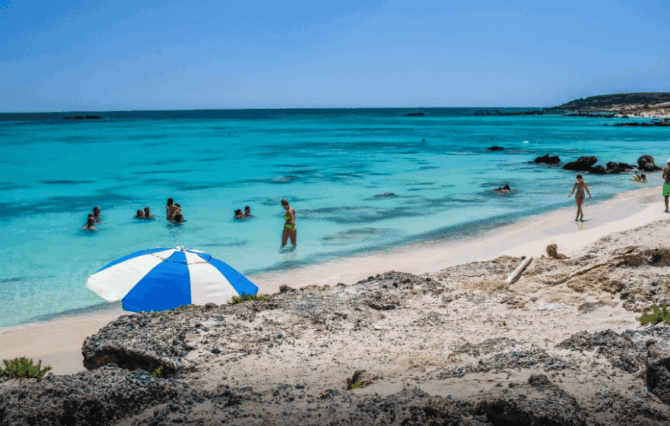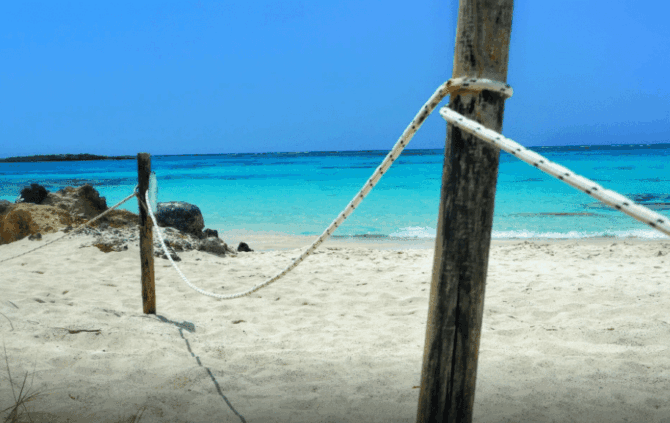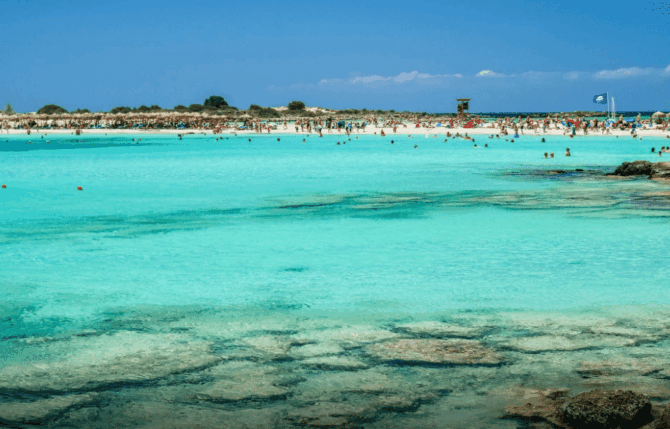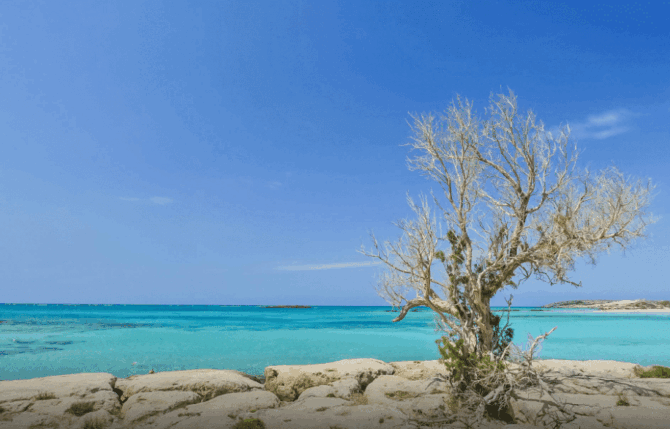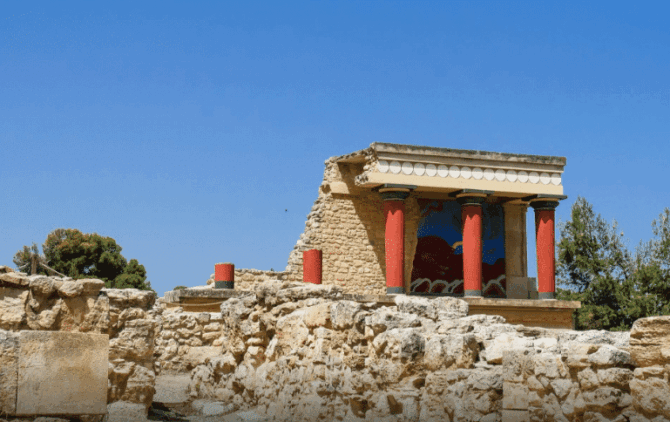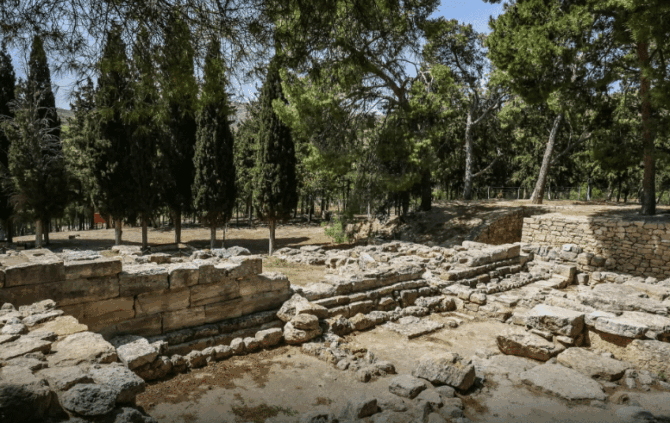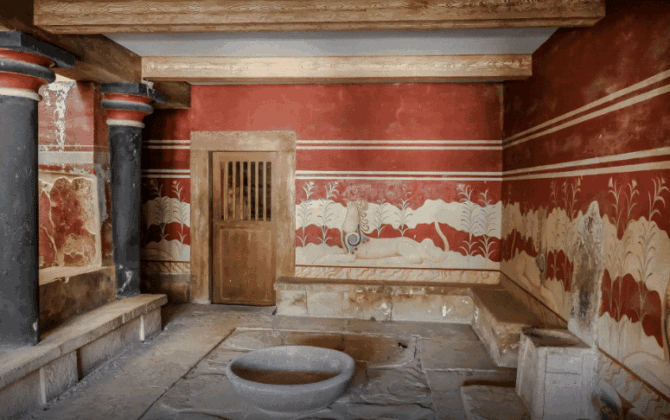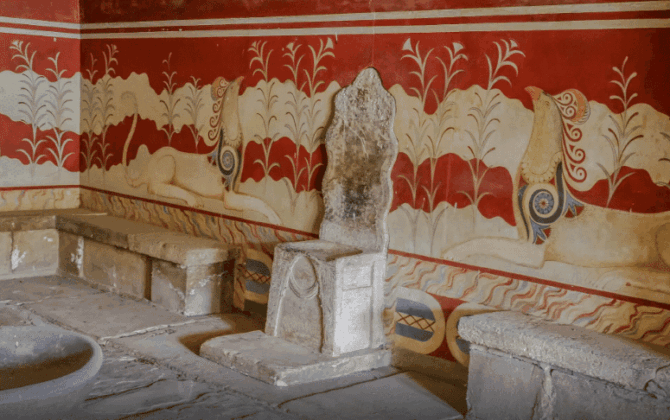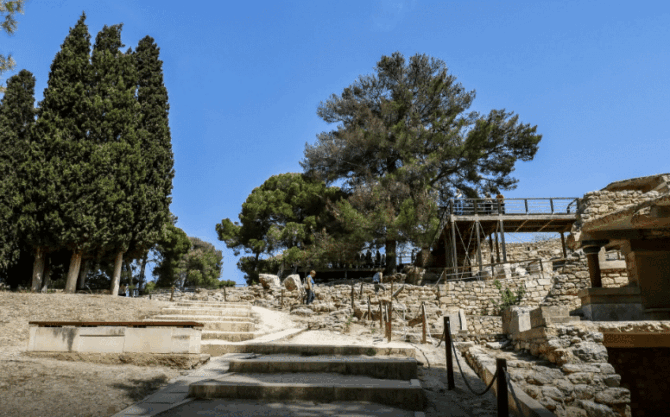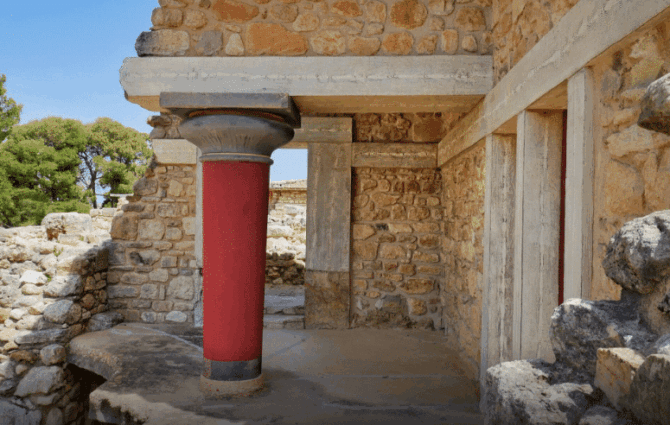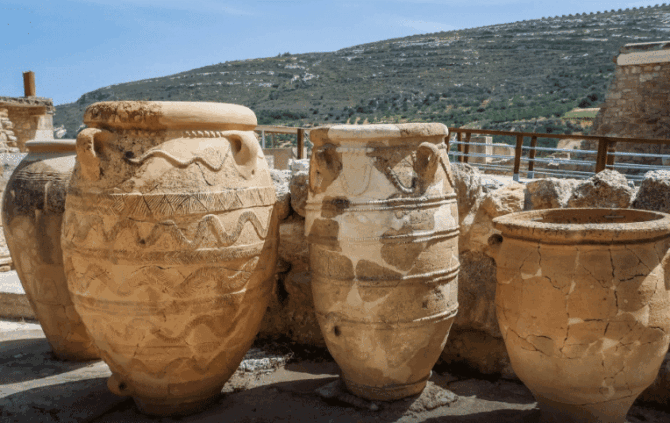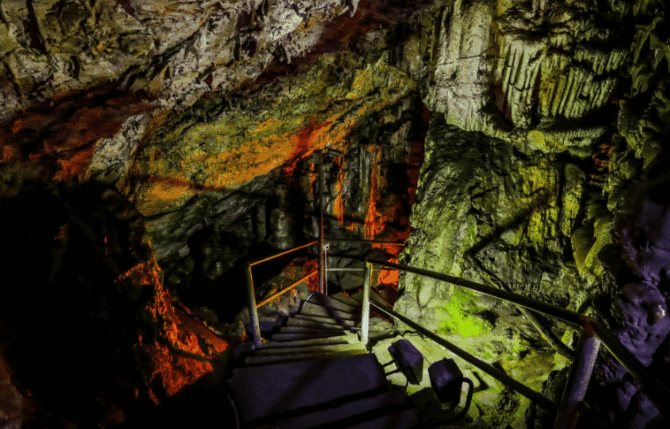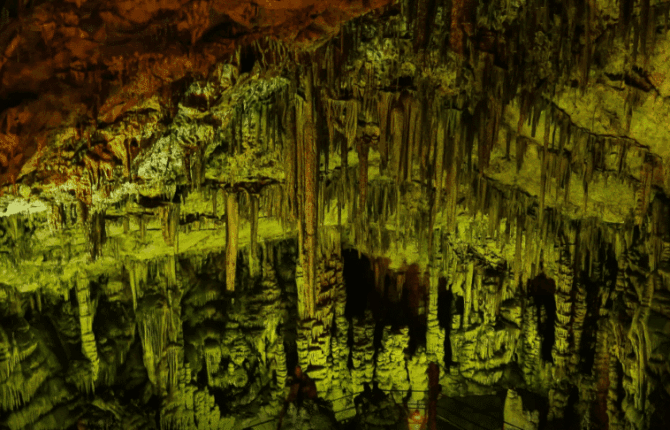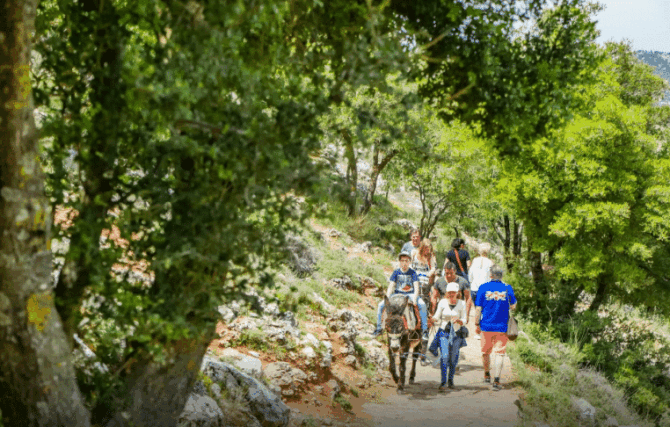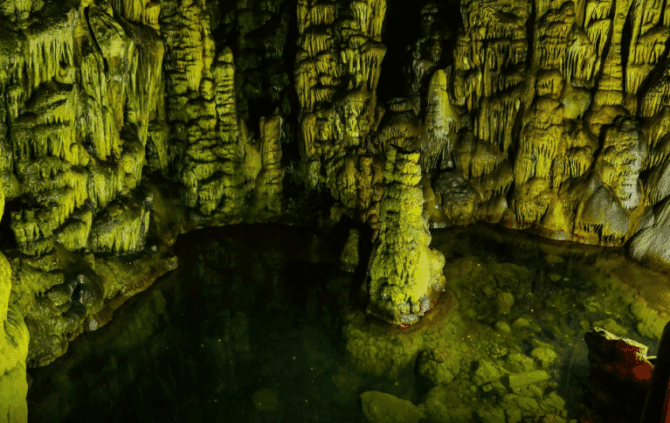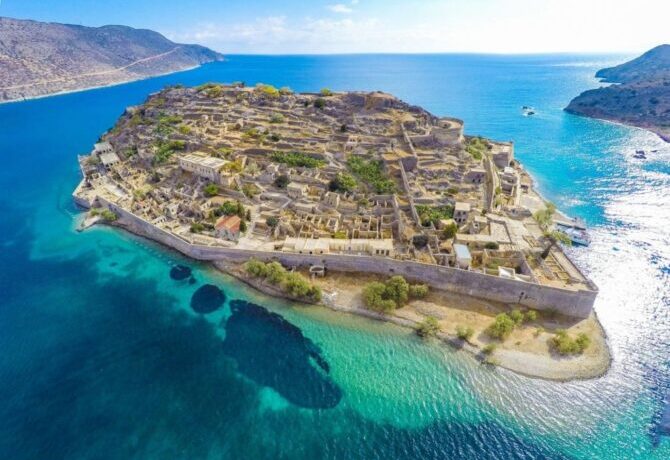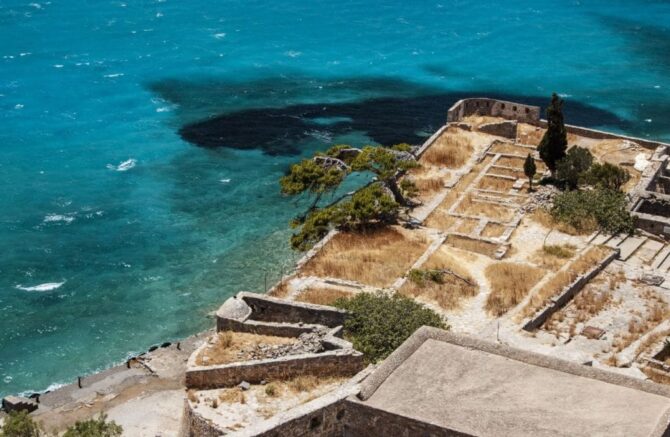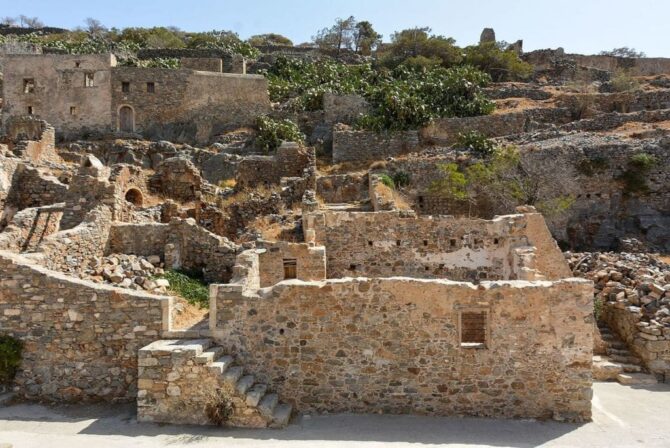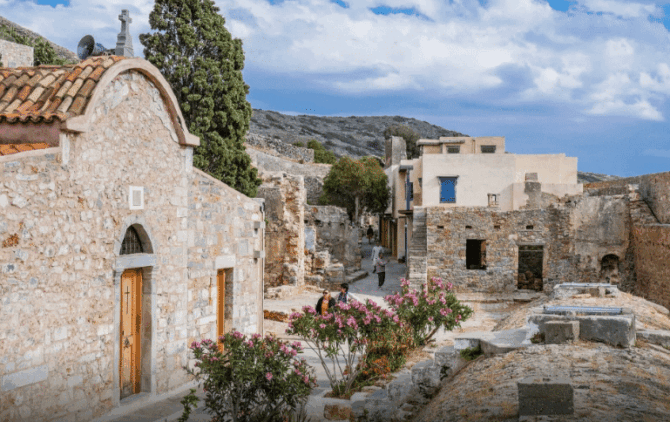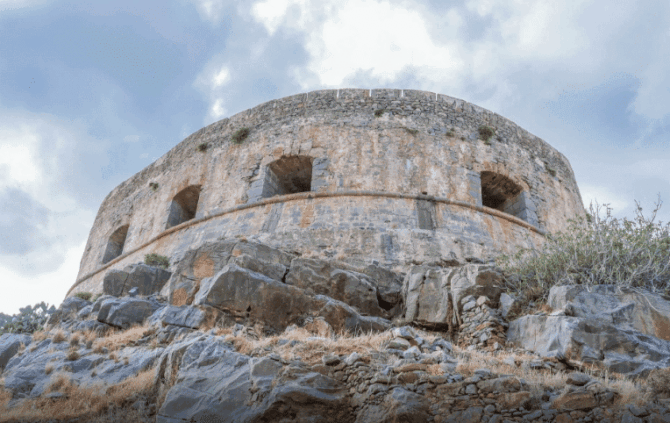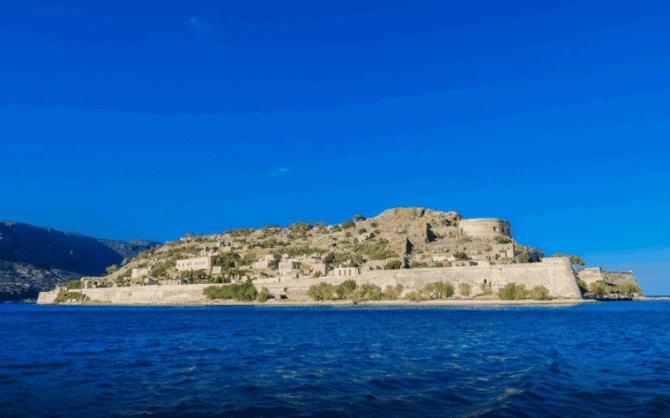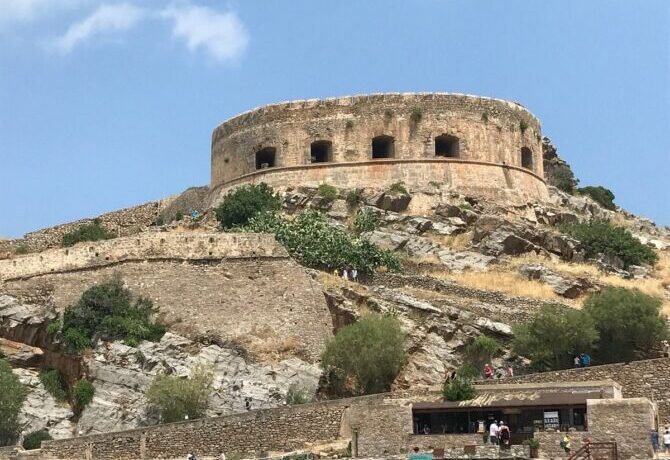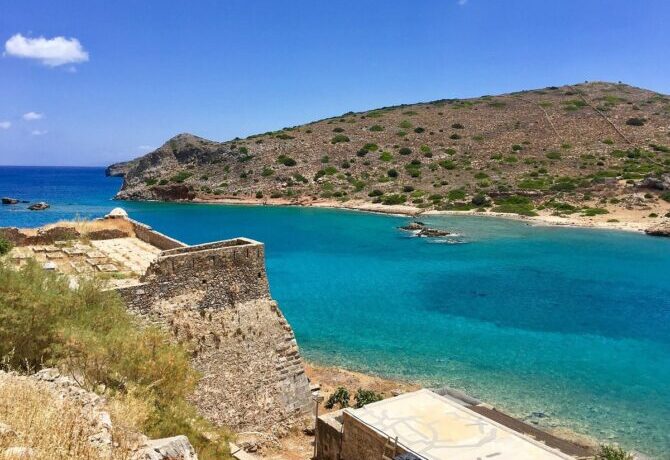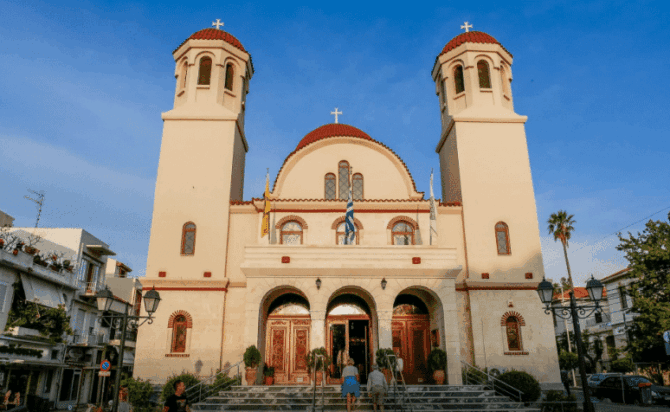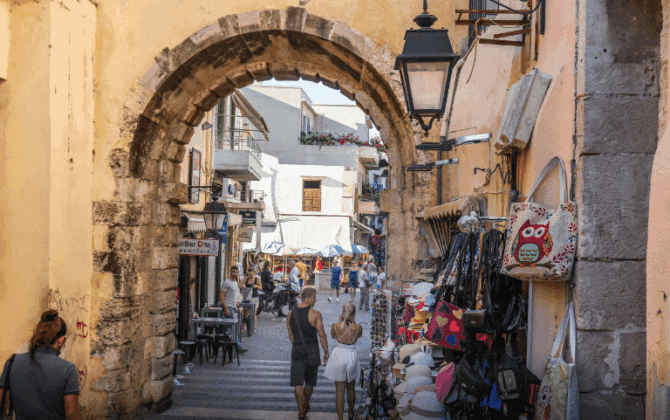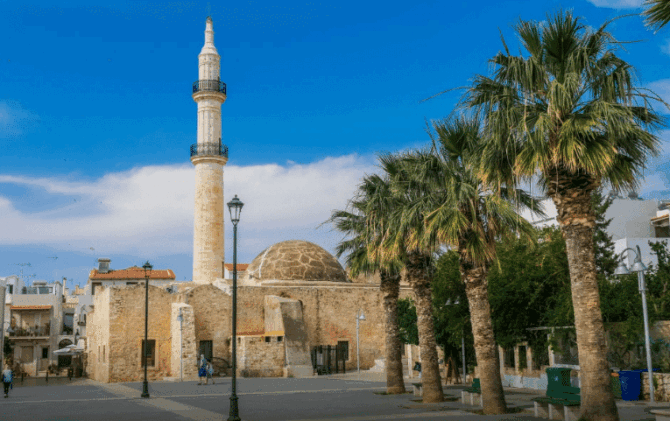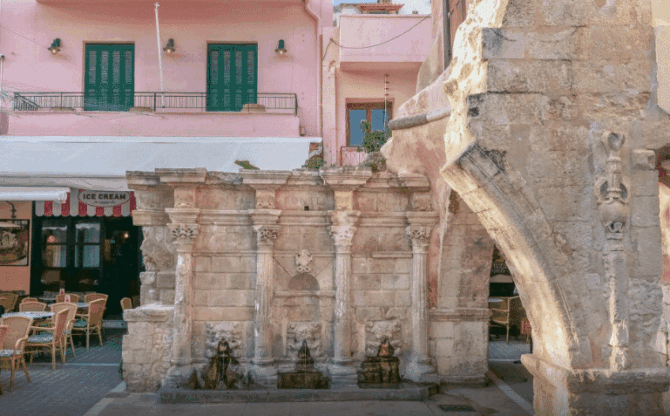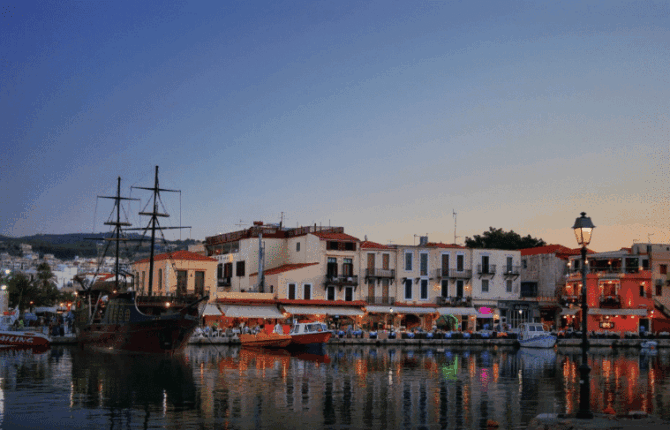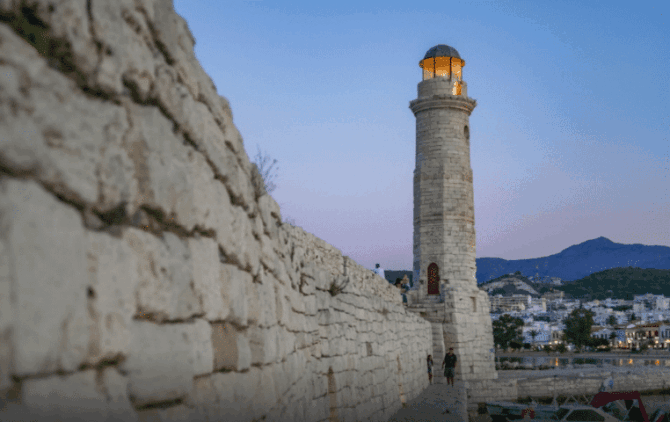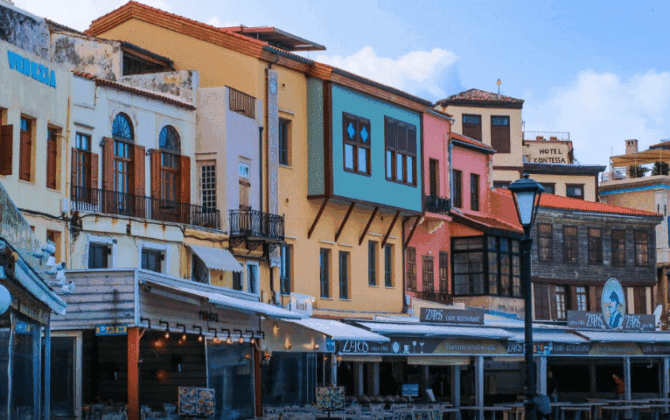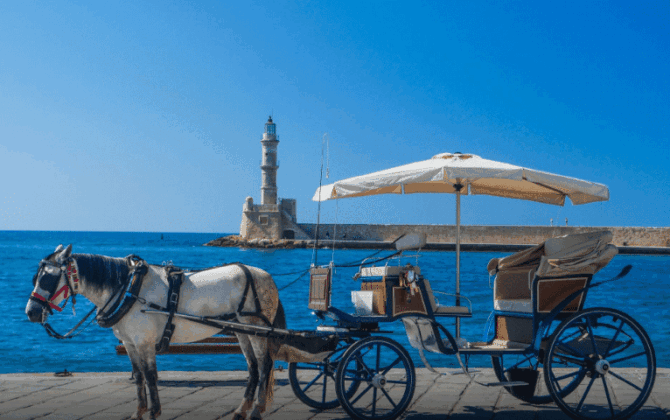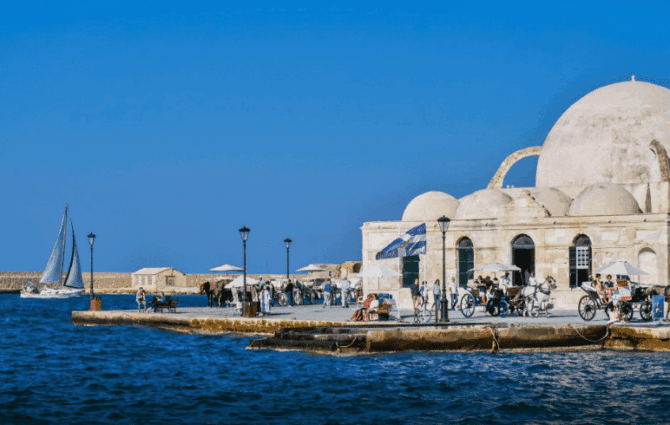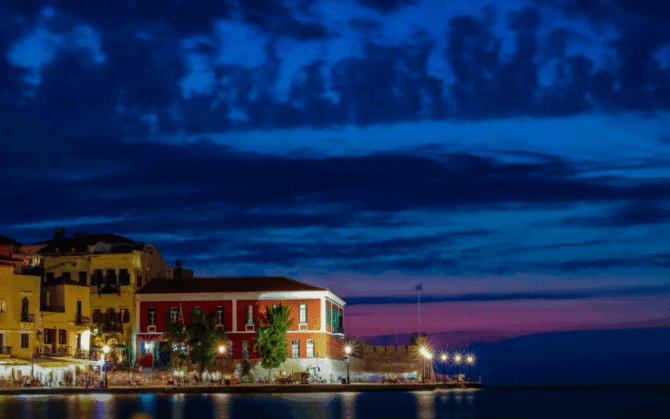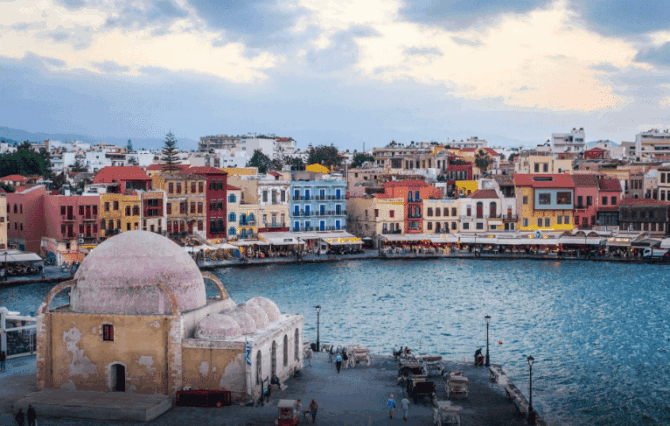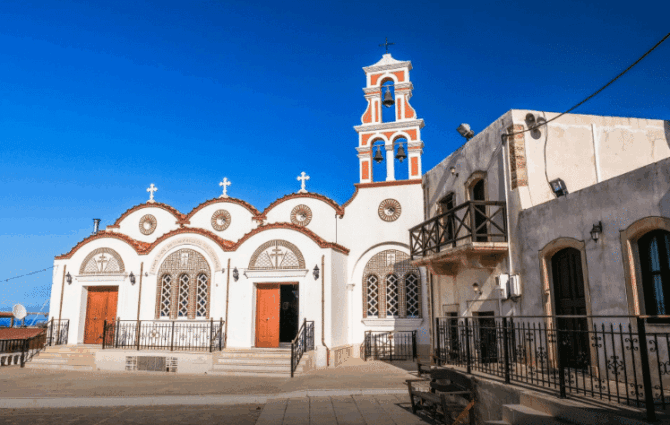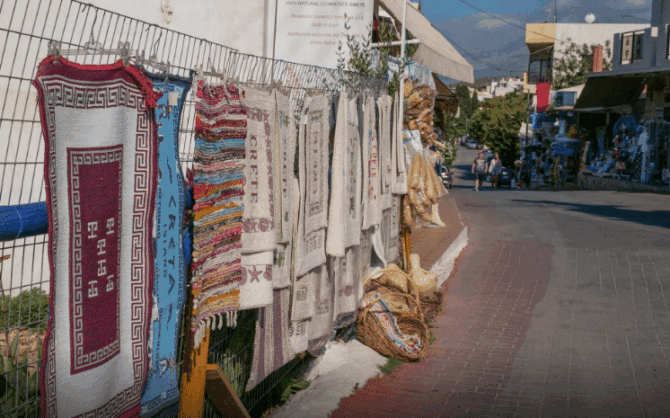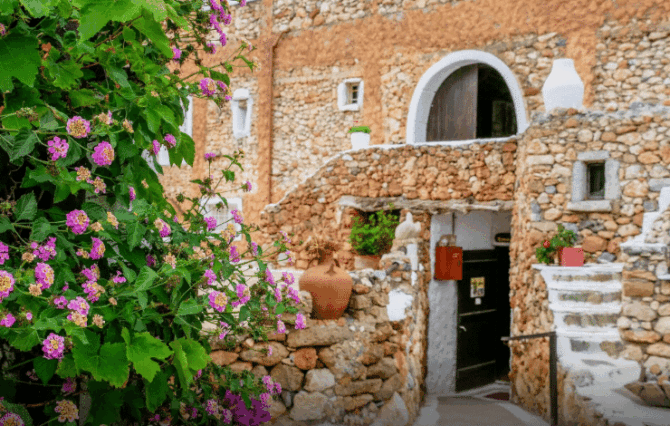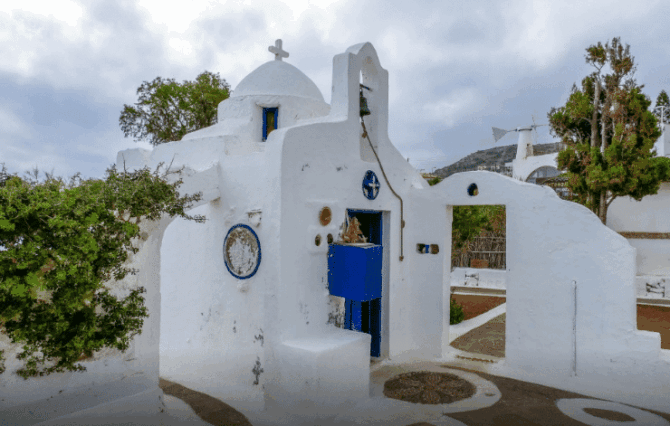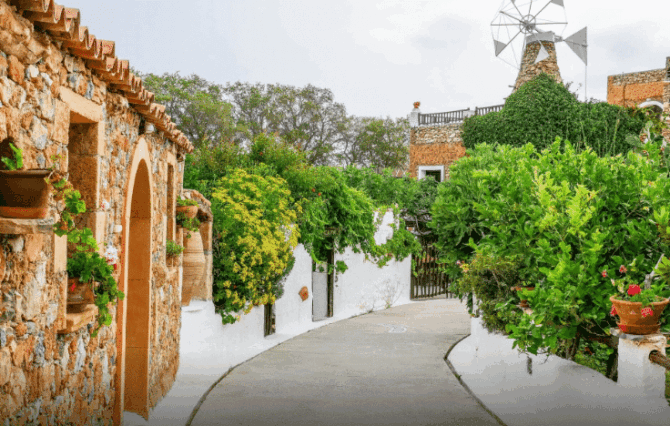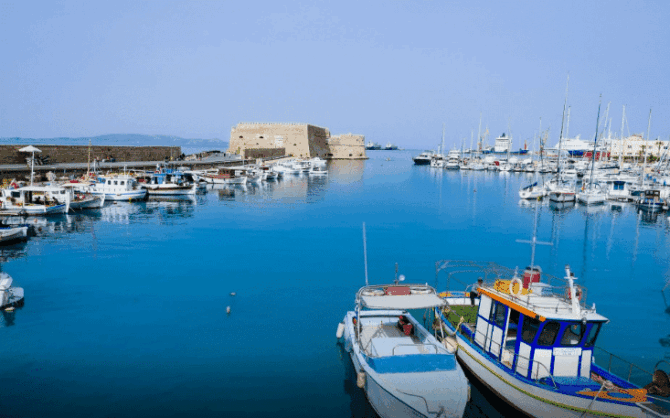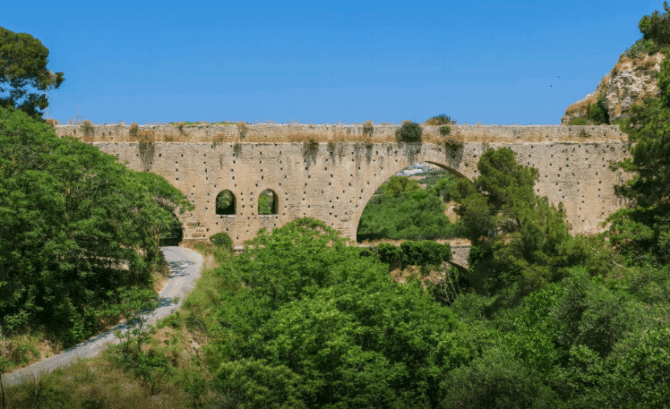More than 2.5 million foreign tourists annually rest in picturesque Crete. The total area of the largest Greek island is 8.26 sq. km. More than 630 thousand people live on the island. Crete attracts numerous travelers with a variety of characteristics, thanks to which the rest becomes unforgettable:
- clean sandy and pebble beaches;
- resorts with a rich tourist infrastructure;
- subtropical nature;
- mysterious caves;
- picturesque gorges and valleys;
- unusually beautiful mountain and forest landscapes;
- transparent warm sea, the water in which warms up in the summer months to + 25.5 … + 26.4.
The first human settlements appeared in Crete in the 7th millennium BC. On the island there was one of the most ancient European civilizations – Minoan. Archaeologists have also found in Crete many places with traces of the stay of various peoples: Dorians, Achaeans, Venetians, Byzantines and Turks. In 1913, the island officially joined Greece. Crete is rich in historical and sacred buildings belonging to a variety of eras.
- 1 Attractions Crete on map
- 2 Agios Nikolaos
- 3 Balos Lagoon
- 4 Botanical Park
- 5 Kules Fortress
- 6 Xerokambos
- 7 Loutro Village
- 8 Matala Village
- 9 Arkadi Monastery
- 10 Monastery of St. Irene
- 11 Lake Kournas
- 12 Sfendoni Cave
- 13 Preveli Beach and Palm Forest
- 14 Mili Gorge
- 15 Sarakina Gorge in Meskla
- 16 Teriso Gorge
- 17 Falasarna
- 18 Elafonisi Beach
- 19 Palace of Knossos
- 20 Dikteyskaya cave
- 21 Spinalonga Island
- 22 City of Rethymno
- 23
- 24 City of Chania
- 25 Heraklion City
- 26
Attractions Crete on map
Agios Nikolaos
On the island there are hundreds of small towns and villages that attract the attention of foreign tourists. One of them is Agios Nikolaos, founded, according to official data, in 1881 Since the 1980s, this compact city, located in the west of the island on the shores of Mirabelon – a picturesque bay – is known as a thriving seaside resort.
Agios Nikolaos is of great interest to foreign tourists due to the pebble and sandy beaches. The picturesque city also attracts travelers with sacred, natural, historical and cultural sites. Tourists must visit the five most interesting sights:
- the church of St. Nicholas, after which the city is named; the temple was built by the Byzantines in the IX century;
- Archaeological Museum, which began to receive visitors in 1970; more than 6 thousand exhibits tell about historical events from the Neolithic period to the end of the Greco-Roman era;
- the church of Agios Charalambos, erected in honor of St. Charlampius;
- Lake Voulismeni, located almost in the center of the seaside resort;
- the embankment of the resort, decorated with sculptures “Cornucopia” and “Abduction of Europe”; compositions – brothers Sotiriadis and N. Kondouros;
- Fisherman’s crypt that adorns the eastern shore of Lake Voulismeni; in the inner hall of a small sacred building there is an exposition of the Museum of Ancient Sailing Ships.
Motorists get to Agios Nikolaos from Heraklion. The path is on the E-75 road. Travelers who prefer public transport depart from The two bus stations of Heraklion, located near the airport and harbor. Most tourists visit the seaside resort during the beach season.
City website: https://www.agiosnikolaoscrete.com/
Address: Ag. Nikolaos 721 00
Balos Lagoon
Tourists who dream of seeing exotic places in Crete often choose a trip to the Balos Lagoon, which is located 47.6 km northwest of Chania and 11.8 km from Kissamos. This extraordinarily beautiful place is located at the point where the waters of three seas connect: the Ionian, Libyan and Aegean.
A small lagoon is located between two picturesque capes: Tigani and Gramvusa. On the second of them is a 122-meter rocky mountain. If desired, travelers can climb a hill and see the unusually beautiful seascapes. Tigani means “frying pan”. The cape really looks like this household item, well known to housewives.
The water in the Balos lagoon surprises tourists with a variety of color shades that vary depending on weather conditions and time of day. There are no trees, shrubs and other vegetation, but tourists coming here can relax on a clean beach covered with soft white sand. The best time to visit the lagoon is May, June and September. In July and August, Balos is crowded with holidaymakers.
Guides will certainly talk about an event that occurred in the early 1990s – a visit to the lagoon of Diana – a British princess. Tourists get here from Chania on regular buses, rented cars or as part of excursions. From Kissamos and Trachilos , a small nearest village – excursion ships and boats depart to the lagoon. Motorists go to Trachilos, where they leave the car in the parking lot and change to the ferry.
Address: Balos Lagoon, Kissamos 734 00
Botanical Park
Connoisseurs of nature will find a unique picturesque corner if they visit the Botanical Park of the island. This amazing place, where plants are presented not only in Crete and Greece, but also in other regions of the planet, is located 18.6 km southwest of Chania. The botanical park was laid out on the slope of a picturesque mountain after a large fire that occurred in this place in 2003.
Now the green oasis occupies a vast territory of 200 thousand square meters. m. the Goal, which is set by the staff of the Botanical Park, is the preservation of local fauna and flora, as well as the cultivation of trees, flowers, herbs and shrubs from different parts of the world. The territory of the natural object includes several gardens:
- tropical;
- citrus;
- fruit trees;
- fragrant herbs;
- endemic plants.
On the territory of the Botanical Park there are also vineyards, a vegetable garden, a farm with animals (goats and donkeys), a small lake and a restaurant where national dishes are offered. Among the plants there are more than 100 thousand species of insects, including butterflies. In the park you can see a variety of birds and animals:
- hawks;
- ferrets;
- raven;
- ermine;
- nightingales;
- porcupines;
- binders;
- hares;
- blackbirds;
- zaryanok.
The Botanical Park welcomes guests from May to November from 9 am to 8:30 pm. The cost of admission in 2021 for adults is 6 euros, for children from 6 to 12 years old – 4 euros. Tourists travel by car from Chania on the Chania-Omalos highway. Regular buses and excursions depart from four Cretan cities: Agios Nikolaos, Chania, Platanias and Agia Marina.
Website: https://www.botanical-park.com/
Address: 18th km National road of Chania–Fournes, Omalos, 730 05
Kules Fortress
Tourists who are sincerely interested in the history of Crete should definitely visit Heraklion. In this administrative center of the island there is a restored building of Koules – a powerful fortress that has become a symbol of the city. The citadel rises above the Venetian harbor just north of the port and Sophocles Street, which stretches along the sea coast.
The original building of the fortress was erected in the XIV century. However, the fortification has not been preserved, as it was destroyed by a strong earthquake. In 1523, the Venetians, who became the owners of the city, began the construction of a new fortress. The construction was completed in 1540, the Venetians called the citadel Rocca al Mare, which can be translated as “Rock by the sea”. The author of the project is M. Sanmikele, An Italian engineer and architect.
In 1669, a period of Turkish domination began in Heraklion. This era lasted until 1898 The Turkish name of the citadel Su Kulesi, which can be translated as “Sea Fortress”, has reached our days. The Turks expanded the citadel, erected additional fortifications, a minaret and a small mosque.
Now before visitors appears the restored fortress in the form that the citadel was under the Venetians. Turkish buildings are also preserved. On the second floor there were rooms for garrison officers and fortress commanders. On the first level there were warehouses where nuclei and ammunition were stored. There were also several living quarters.
The thickness of the internal fortress walls is up to 3 m; external – up to 9 m. Gear superstructures on the roof of the second floor are typical of Italian architecture. In the past, the fortress walls were decorated with three bas-reliefs, each of which depicted a winged lion. The mythical animal is a symbol of the Apostle Mark. The saint is considered the patron saint of Venice, Heraklion and the fortress. Of the three bas-reliefs, only two have survived.
Now most of the territory of the citadel is available for tourists. There are also open the doors of the museum, where cannons, shells and cannonballs of the times of Turkish domination are stored. Koules is available daily except Tuesdays, 8 a.m. to 8 p.m. in the summer and 8:30 a.m. to 3:30 p.m. in the winter. Entrance for adults is 4 euros, for children – 2 euros. Most tourists visit Koules in the summer months, May and September.
Website: http://koules.efah.gr/koules/Page?name=enotites&lang=en
Address: The Venetian Harbor, Heraklion 712 02
Xerokambos
On the western outskirts of the island there is a place that causes great interest for lovers of a relaxing holiday. 164 km from Heraklion is Xerokambos. This is the name of a small village and a beach located near it, evenly covered with pebbles of different sizes and golden sand.
These places will suit fans of a quiet pastime away from crowded tourist routes. The sparse vegetation of the plains, stone gardens and thickets of shrubs – all this is met by travelers on the way to Xerochambos. Tourists who have reached the village can stay in local villas and cozy apartments. For those who want a snack or a hearty lunch, the doors of taverns are open:
- Akrogiali;
- Dolphin;
- Coffee House;
- Creta Sun.
Travelers reach Xerokambos by car on the Ierapetras-Sitas road, which stretches along the southern coast of the island and goes through the villages and villages: Farma, Agia-Fotia, Analipsis, Vori, Khandras and Ziros.
Address: Xerokampos 720 59
Loutro Village
There are always many tourists who dream of an isolated holiday surrounded by picturesque landscapes. The village of Loutro, located 36 km (in a straight line) south of Chania and 97 km southwest of Heraklion, is ideal for this purpose. In the vicinity of this compact resort, where no more than 100 people live, there are no roads and noisy cities.
In ancient times, on the site of Loutro was Finikas – an ancient city. The Venetians built a powerful fortress here, protecting nearby ports from attacks by enemy ships. Much later, the Turks built a small fort. From the ancient fortifications there were ruins of towers and fortress walls. In 1821 there was a committee in the village, whose representatives led the struggle against Turkish domination.
From the north Loutro is protected by low rocky mountains, from the south by an island located in a picturesque bay. Therefore, there are no strong winds and high waves. In the village for tourists there are two pebble beaches. Their total length is about 200 m. Along the coast stretches a string of cozy taverns, which serve delicious Greek and Mediterranean dishes:
- Loutro;
- Keramos;
- Scirocco;
- Pavlos;
- Limani;
- Ilios.
Guests of the resort stay in one of the 17 inexpensive local hotels. Lovers of entertainment on the water can rent a boat or catamaran. From Loutro boats depart to the neighboring beaches and villages located on the sea coast. There are no roads in the immediate vicinity.
Motorists usually get to the town of Chora Sfakion, located 5.32 km from Loutro. From there you can walk or take a taxi. Another option is to travel by ferry departing from the port of Agia Roumeli.
Address Loutro: Loutro, Chania 730 11
Matala Village
66 km south-west of Heraklion on the southern coast of the island “hid” the village of Malata. Now it is a cozy resort, which is home to no more than 70 people. The first people settled here in the distant Neolithic era. They left behind spacious caves, skillfully dug in the local coastal rocks.
Guides always tell tourists the legend of Zeus. The Greek god, who turned into a bull, brought Europe – the Phoenician queen – to the place where Matala is now located. Artifacts found by archaeologists during many years of excavations indicate that in the Minoan and Roman eras, a port was located here.
The caves have long been used as burial places. In the 1960s and 1970s, groups of freedom-loving hippies settled in them. Among the representatives of this subculture were well-known at that time North American and British musicians: J. S. Williams. Mitchell, B. Dylan, K. Stevens and others. Hippies still come to Matala.
The village has a small beach. Here you can rent motorcycles, scooters, cars and ATVs. In Matala, the doors of two small churches, more than 30 hotels, 7 shops and many taverns are open for guests of the resort. Tourists are happy to get acquainted with the taste of Greek dishes in local gastronomic establishments:
- Calypso;
- Scala;
- Armonia;
- Michalis;
- Fragiskos;
- Akouna Matata;
- Sunset Matala;
- Gerorges’ Yard.
In the vicinity of Matala are the remains of Commos – an ancient port – and the Phaistos Palace. Both structures belong to the Minoan era. Tourists who prefer independent travel, get to the village from Iracleen. The route includes a trip on three roads: No. 69, Miron–Pompias and Gortinas–Matalon. From Heraklion to the resort there are regular buses. Foreign tourists prefer to come to Matala during the summer season.
Village address: Matala 702 00
Arkadi Monastery
About 80 km southwest of Heraklion is one of the most famous Cretan sacred complexes. Arkadi Monastery is considered a symbol of the struggle for the freedom of the island. Scientists argue about the time of the foundation of the monastery. Most of them are inclined to conclude that the monastery has existed since the XVI century.
The monastery was badly damaged in 1648, when the sacred complex was plundered by the Turks. In 1866, arkadi Monastery became the center of the uprising against the Turkish occupiers. The defenders of the sacred complex fought bravely, but were destroyed by enemy troops superior in strength.
Now, at the beginning of the XXI century, visitors see the restored monastery complex, which occupies an area of 5.2 thousand square meters. m, and includes several objects:
- Transfiguration Church;
- a museum that presents sacred exhibits belonging to different historical periods;
- guest and monastery houses;
- cells of monks;
- bakery;
- refectory;
- chapel of St. Arcadia;
- warehouses;
- stables;
- cellar.
Tourists and pilgrims come to the territory of the monastery throughout the calendar year. A particularly large flow of guests is characteristic of the warm period – from April to mid-autumn. Entrance to the monastery territory, including the museum, is free. Time to visit in summer is from 9 am to 7 pm, in winter – from 9:00 to 18:00.
Tourists get to the monastery complex by regular buses from the bus station of Rethymno. From the same city there is a road Platanon-Moni-Arkadiou. The distance that motorists overcome is 19.6 km.
Arkadi Monastery website: https://www.arkadimonastery.gr/
Address: Arcadi 741 00
Monastery of St. Irene
Almost every ancient sacred structure located on the island was subjected to a variety of tests: destruction, robbery or burning. One of them is the monastery of St. Irene, located 4.9 km south of the center of Rethymno. Some historians believe that the monastery existed already in the XIII century. The first written mention of the monastery dates back to 1362.
The sacred structure was destroyed several times by the Turks and restored by the monks and patriots of Crete. The last large-scale restoration work was carried out from 1989 to 2003 Currently, visitors see a large monastery complex, including several buildings and premises:
- Church of St. Irene;
- cells of nuns;
- the chapel of the martyrs – Irene, Nikolaos and Raphael;
- outbuildings;
- workshops;
- an old mill;
- monastery museum.
The courtyard of the monastery, laid with multi-colored tiles, is decorated with fruit and coniferous trees, flowers and elegant lanterns. Access to the monastery is open daily from 9 am until sunset. Free tours of the monastery are conducted by the nuns themselves.
In the summer months, the number of guests increases markedly compared to winter. From the territory of the monastery, located on the slope of a picturesque cliff at an altitude of 260 m, you can consider the surroundings and distant seascapes for a long time. Tourists get to the monastery on the road Rethimnou-Roussopitiou, going from Rethymno to the monastery of St. Irene.
Address: Rethimno, Ag. Irini 741 00
Lake Kournas
In the western part of the picturesque island is one of the most beautiful natural objects of Crete – Lake Kournas. The total area of the reservoir is 1.2 sq. km, its greatest depth is about 25 m, the length of the coastline is 3.5 km. The lake is located about 3.8 km south of Georgioupolis at the foot of the picturesque White Mountains, the name of which sounds in Greek as Lefka-Ori.
Greek and European scientists do not have a single point of view about the origin of the reservoir. Most experts are inclined to the hypothesis of the emergence of the lake as a result of a natural disaster – the collapse of an underground cave. Now the reservoir is included in a protected protected area. In August and September, more than 260 species of birds accumulate here.
In the summer months, tourists enjoy riding on the lake on catamarans or boats. The cost of the service in 2021 for one person is from 7 euros. On the shore of the natural reservoir for guests open the doors of hotels, shops and villas. There are also several cozy taverns:
- Corricia;
- Atilis;
- Cavallos;
- Grik;
- Ambrosia;
- The Beautiful Lake.
Tourists reaching Lake Kournas from Heraklion go towards Georgioupolis. In the village of Paralya Qurna, travelers turn left and continue through Asprouliani, Muri and Cavallos. The distance from Heraklion to the reservoir is 104 km.
Address: Georgioupolis 730 07
Sfendoni Cave
Historians argue about the existence of Sfendonis. About 40 km southwest of Heraklion is a cave named after this Greek rebel. The total area of the corridors of the natural object is 3 thousand square meters. m. The cave, located at an altitude of 630 m, includes 11 halls, five of which are available for visiting.
Underground corridors amaze with a variety of colors, which shimmer stalagmites, stalagnates and stalactites. The effect is achieved thanks to the lighting equipped inside the halls available for visiting. In the cave there is a suspension path, on both sides of which rope railings stretch.
The visit is available only with the excursion. The duration of the exciting event is from 30 to 45 minutes. The cost for one participant is 4 euros. Excursions are conducted in two languages: Greek and English. When buying a ticket at the entrance to the cave, tourists purchase booklets with information in their native language.
In summer – from mid-April to the end of October – excursions are held from 10:00 to 17:00. In other months only on Sundays and Saturdays from 10:30 to 14:30. Most tourists come here in rented cars in the summer season. To get to the entrance to the cave from Heraklion, you must first go along the national road. The path then passes through Tylisos–Anogion and Mourtzanas–Anogion.
Address: Sfendoni Cave, Zoniana 740 51
Preveli Beach and Palm Forest
Tourists looking for places where a beach holiday can be combined with contemplation of nature, should go to the southern coast of the island. Between the two seaports – Plakia and Agia Galini – is Preveli – a small beach, evenly covered with fine pebbles and yellowish sand.
There is no infrastructure familiar to lovers of comfort: showers, sun umbrellas, cabins and sun loungers. Of the entertainment for tourists, only boats and catamarans are available. However, the beach has an important advantage. Here flows the Megaspotamos – a full-flowing and wide river, which at this point of the coast flows into the Libyan Sea.
Preveli is also the name of a nearby monastery. Advertising booklets prefer to designate this place as Palm Beach. The second name is associated with a grove stretching along the low banks of Megaspotamos. Thanks to the palm forest, vacationers have a feeling as if they were on the African coast.
The beach is located 35 km south of Rethymno. To get to Preveli from this city, tourists use two roads: Rethiminou–Agias Galinis and Koxaron–Moni Prevelis. The second option is boats from Agia Galini or Plakia.
Address: Preveli, Rethimno 740 60
Mili Gorge
7 km south of Rethymno is one of the most picturesque places of Crete. This is the Mili Gorge, the name of which can be translated as “mills”. Here are the ruins of the village of the same name. The length of the trail along the Mili Gorge is 2.2 km.
On the hillside you can see the remains of several water mills. In the past, there were more than 30. For a long period, mills were used to process grain, which was brought here from the surrounding area. In 1972, the villagers left the village because of the danger of landslides and moved to another place.
Under the influence of natural elements – showers and strong winds – abandoned mills gradually collapsed. Tourists come here in spring, early autumn and in the summer months to admire the beauty of the local natural landscapes. Now in the mili gorge you can see several objects of interest to travelers:
- one restored mill;
- ruins of residential buildings;
- remains of mills;
- mountain river;
- plane trees, fruit, olive and other trees and shrubs;
- churches of saints: Five Virgins, John and Anthony;
- the remains of several aqueducts;
- the existing water supply system;
- a tavern housed in a restored apartment building.
To the beginning of the Mili gorge, tourists get from Rethymno on two roads, passing one into another: Akademias Vivi and Pervolias-Chromanastrion.
Address: Myli, Rethimno 741 00.
Sarakina Gorge in Meskla
One of the natural sites of Crete, worthy of the attention of tourists, but rarely visited, is the Sarakina Gorge, located next to Mescle, an ordinary Greek village. The length of the trail on which travelers move is about 2 km. On the way of connoisseurs of nature there are many interesting objects:
- rocks of bizarre shapes;
- subtropical shrubs and flowers;
- cypresses, plane trees, as well as olive, fruit and other trees;
- strong bridges;
- multi-stage stone stairs;
- metal scuits.
The path to the entrance to the gorge begins at the village of Meskla. Tourists need to walk to the Church of the Virgin and walk along the road to the first sharp turn to the right. To get to Mescla by car from Chania, travelers should head south on the Chanion–Sougias road, then continue along canion–Omalou, turning onto Fournes–Therissou.
Address: Meskla, Platanias 730 05
Teriso Gorge
In the western part of the long island, 9.8 km south of Chania, the Teriso Gorge is located. This natural site is considered one of the most beautiful on the island. The distance from Heraklion to the entrance to the cave is 146 km. To the delight of motorists, a road covered with asphalt was built through Teriso. It stretches parallel to a small river along the gorge, which ends at the village of the same name.
In its size, Teriso surpasses many similar natural objects on the island. The length of the gorge is 6.5 thousand m. The width is very diverse – from 3 meters in narrow places to more than 300 m in the valley area. Travelers meet in the gorge many interesting objects:
- small herds of domestic sheep and goats;
- thickets of subtropical bushes and flowers;
- pines, plane trees, olive and other trees;
- bridges thrown over a winding river or impassable places;
- lines of electric wires;
- layout of the Orthodox Church;
- boulders scattered along the roadsides;
- high steep cliffs, overgrown with grasses and bushes.
Travelers get to the gorge from different points of Crete by roads stretching along the northern coast of the island towards Chania. Then the path goes through one of the two suburbs – Murnies or Perivolia – and the village of Garipa. Signs will help to find the way unmistakably.
The address of the Teriso gorge is Vasiliou Poulaka 731 00.
Falasarna
On the north-west coast of the island there is a place that is certainly worth a visit for both lovers of pastime on the beaches and connoisseurs of ancient history. This is Falasarna – a compact village and seaside resort. Here was located the ancient city of the same name, which gradually became a large polis – as historians call the ancient Greek city-states.
Scientists argue about the date of the foundation of Falasarna. Most of them are called 333 BC. e. In its heyday, Falasarna was a large city-state for that era, where its own laws were adopted and its own coin was minted. In 69–67 BC. the polis was captured and destroyed by Roman troops.
In 1986, large-scale excavations began at the location of Falasarna. Thanks to the work of archaeologists, now the guests of the resort appear before the remains of ancient buildings:
- parts of the fortress wall;
- pottery workshops;
- public baths;
- acropolis;
- a powerful fortress tower;
- a stone statue similar to a throne.
The beach of the resort is divided into five zones different in terms of comfort level. The central part is best equipped, stretching for 1 thousand meters and covered with fine sand. For vacationers there are two centers: surfing and paragliding. Guests of the resort can taste local dishes and wine in one of the cozy taverns:
- Golden Sunset;
- Orange Blue;
- Galasia Thea;
- Bird Away;
- Perigiali;
Tourists go here on the highway stretching along the northern coast of the island – E-75 and E-65. After Kissamos you need to turn towards Trachilos and drive about 12 km. The distance to Falasarna from Chania is 52 km, from Rethymno – 110 km, from Heraklion – 190 km. Signs labeled Falassarna Beach will help travelers reach the village and the beach.
Tourists come to the resort only in the summer season. Once a day from Chania to Falasarna there is a regular bus.
Address: Falassarna, Kissamos 734 00
Elafonisi Beach
Crete surprises with a variety of natural and historical sites. The island is also rich in amazingly beautiful beaches. One of them is Elafonisi, located in the southwestern part of Crete, 73 km from Chania, if you go by road. The beach is covered with fine pink sand. Thanks to this shade, Elafonisi has become popular among foreign tourists who seek to get here from early May to mid-autumn.
The color of the sand is explained by its composition: tiny particles of corals, shells and starfish. Elafonisi is also the name of the island, which is located 220 m from the sea coast. This beautiful-sounding word can be translated as “Deer Island”. Elafonisi is located in a protected area rich in varieties of plants, amphibians, birds and reptiles. However, deer do not live here.
The beach is equipped with everything that is necessary for lovers of a comfortable pastime. The cost of a set of sun umbrellas and a chaise longue – from 6 euros. Leisure is also diverse: from quiet admiration of colorful sunsets and swimming in the turquoise sea to diving and snorkeling.
Tourists come to the beach on the morning bus, which departs from Chania. Travelers who prefer an independent trip in a rented car choose the path along the road leading to Kissamos. Before reaching this city, near the village of Kokino-Metohi, you should turn left. The road passes by the villages of Kalodiana, Potamida, Volgaro, Topolia and Elos.
Address: Elafonissi, Kissamos 730 01
Palace of Knossos
5.5 km south of Heraklion is one of the oldest archaeological sites in Crete. This is the famous Palace of Knossos, which existed in the era of the Minoan civilization. For a long time, Knossos had the status of the main city of the ancient state. In the Minoan capital, several engineering inventions and innovative technologies of that era were implemented:
- multi-storey buildings;
- ventilation;
- water supply;
- artificial lighting;
- sewerage;
- heating.
The grandiose Palace of Knossos was built twice – in 2000 BC. e. and 1700 BC. Both structures were destroyed by earthquakes. Systematic excavations and restoration work under the direction of A. Evans, a British archaeologist, were carried out from 1900 to 1931.
Before modern tourists coming to the palace complex, there are buildings that give an idea of what the second palace looked like. Some of the buildings are reconstructed buildings, stylized under the architectural style of the Minoan era. Tourists with sincere interest get acquainted with the objects located on the territory of the Palace of Knossos:
- with a throne room;
- central courtyard;
- chess corridor;
- sanctuary;
- grand staircase;
- copies of antique frescoes;
- bathrooms;
- swimming pool of mutilations;
- pantries;
- Theatre.
Enumerating all the objects will take a long time. The entrance ticket to the territory of the palace will cost the visitor 15 euros, for children – 8 euros. Access is open from 8 a.m. to 8 p.m. In winter – from November to March – from 9:00 to 15:00. The most suitable period for viewing the architectural complex of antiquity is from mid-April to the end of October.
Most tourists get to the palace as part of excursions or by bus from the bus station, located near the seaport of Heraklion.
Address: Knossos, Heraklion 714 09
Dikteyskaya cave
Among the attractions of the island associated with Greek legends and myths, the Diktea Cave stands out. Long period – from XVIII to VII century BC. e. – This natural object was a place of worship of the gods. The most famous of them is Zeus. Therefore, the cave is often called the name of this Greek god.
Excavations in this place were carried out in different historical periods. The most famous archaeologists who participated in them: G. Hogarth, A. Evans, F. Halbherr and J. S. Hattsikalis. Now the cave of Zeus, located on the slope of Dikti – a picturesque ridge – is equipped with strong stairs, artificial lighting and bridges. The total area of the corridors and labyrinths of the natural object is 2.2 thousand square meters. m. Dikteyskaya cave consists of two halls. The larger of them is divided into five small compartments, one of which is an underground lake.
Not far from the entrance to the cave, located at an altitude of 1024 m, a spacious parking lot is equipped. Here you can quench your thirst or hunger in one of the taverns. Several trails lead from the parking lot to the entrance to the cave. The distance that travelers have to overcome is about 800 m. The cost of the entrance ticket is 6 euros. The cave is open to the public from 8 am to 3 pm. From May to October, access stops much later – at 20:00.
The cave is located next to Psychro, a small Cretan village. Tourists get here with excursions or independently by car. The route is on road 90/E-75. Travelers should turn right near Malia and continue through the villages of Krasi, Pinakiano, Kato-Metoki and Plati.
Dikteyskaya cave address: Psychro Cave 720 52
Spinalonga Island
Crete is surrounded by dozens of small picturesque islands. One of the most interesting for tourists is Spinalonga. The area of this island, located 11.5 north of Agios Nikolaos, is 350 thousand square meters. m. The distance from Spinalonga to the sea coast is about 840 m. To Agios Nikolaos in a straight line – 11.5 km.
Spinalonga became an island in 1526, when the Venetians filled the isthmus connecting the peninsula with Crete. In 1586, the construction of a powerful fortress was completed here. The Venetians used the citadel to protect the Cretan ports. From 1715 to 1903 the island was owned by the Turks. Since 1913, Spinalonga, like all of Crete, became part of Greece. Excavations on the island began in the 1970s.
Now Spinalonga has become a place where thousands of inquisitive tourists try to get in the summer months. Entrance to the territory of the island and the remains of the fortress is paid. The cost for one guest is 2 euros. Travelers come here to see with their own eyes the preserved historical objects:
- the remains of once majestic stone buildings;
- ruins and foundations of residential buildings;
- part of a powerful fortress wall;
- two restored churches: St. Panteleimon and St. George.
Tourists get to the island on comfortable boats departing from the harbors of the nearest resorts: Ölanda, Agios Nikolaos and Plaka. The cost of the trip is from 6 euros.
City of Rethymno
The history of Rethymno, where about 33 thousand people now live, began with the construction of the fortress by the Venetians in 1569 Fortezza – the so-called powerful citadel – for a long time served to protect the city. Now the “Old Fortress” – so you can translate the name of this fortification – the main symbol of Rethymno.
Tourists visit Fortezza to see the well-preserved courtyard, barracks, councillor’s and rector’s houses. The fortress also plays the role of a spacious observation deck. From here, guests of the city admire the seascapes and view ancient buildings from an unusual angle. In addition to Fortezza, in Rethymno tourists can see other interesting objects:
- Rimondi Fountain, built in 1626;
- museums: archaeological, historical and ethnographic;
- The cathedral, as well as the churches of the saints: the four martyrs, Barbara, Antonio and Francisco.
- Mosques: Veli Pasha, Neradze, Ibrahim and Kara Musa Pasha.
The town has a sandy beach, which stretches for 13 km. Guests of the resort are happy to sunbathe, dive, water ski or swim in the warm sea. Near the strip of beaches stretches a string of cozy taverns and restaurants:
- Manolis Place;
- Baywich;
- Nostos;
- Gorgona;
- Kevin’s House;
- Noble;
- Pagliaccio and many others.
The population of Rethymno increases in the summer months by 4-5 times. It is this period that is considered the most suitable for rest in the city and acquaintance with its sights. Even in August and July, the resort is not too hot and stuffy. The distance to be covered by tourists on the road from Heraklion to Rethymno is 80 km.
Address Rethymno: Rethimno 741 00
City of Chania
Kydonia – the so-called Greek ancient polis, which was located in the place where Chania is now located. The modern city was founded by the Venetians, who came here in 1210 Thanks to them, Chania turned into a major commercial center. Turkish domination, which began in 1645, caused great harm to the economic and cultural development of the city. Only in 1913 Chania, together with the entire island, again became part of Greece.
Now in this second largest city of Crete lives more than 55 thousand people. Tourists tend to visit Chania to see the ancient streets of the central quarters. In this corner of the city, it was possible to preserve the Venetian architectural style of residential buildings and an atmosphere reminiscent of the distant Middle Ages.
Chania is also a famous Cretan resort with an equipped beach stretching for more than 400 m. However, tourists show much more interest in the historical and sacred objects of the city. Among them, there is a group of attractions most often visited by guests of Chania:
- museums: archaeological, maritime, military, historical;
- Firkas is a powerful Venetian fortress, the construction of which was completed in 1629;
- temples: Cathedral and Church of St. Nicholas;
- Küçüç Yüçan – well-preserved mosque;
- Art Gallery, where the works of Cretan painters are presented;
- lighthouse, the construction of which was completed in 1710.
The most favorable time for a holiday in Chania and acquaintance with the sights of the resort is the summer season. The distance from Heraklion to the second city of the island by road is 140 km.
Address: Chania 731 32
Heraklion City
Tourists vacationing in Crete can not ignore the administrative center of the island. Since 1971, these functions have been performed by Heraklion, which is home to more than 140 thousand people. The total area of the city is 109 thousand square meters. m According to this indicator, Heraklion is about 6 times larger than the territory of Yalta.
The history of the city is full of dramatic events. In different eras, the territory on which the capital of the island is now located passed from one nation to another. Here the Venetians, Arabs, Byzantines and Turks established their own orders. Heraklion finally became a Greek city in 1913 Tourists come here primarily to get acquainted with the numerous sacred and historical sites:
- Venetian loggia, built in 1628 in the Renaissance style;
- Koules – an ancient Venetian fortress;
- cathedrals of saints: Mark, Catherine, Mina and Titus
- museums: historical, fine arts; natural history, archaeological and ecclesiastical history.
You can come to the city in any month and season, but especially the capital of the island is beautiful in the warm season. The flight from Moscow to Heraklion lasts from 4 h. 15 min. to 4 h. 25 min.
Address of the capital of the island: Heraklion 712 02
Despite its relatively small size, Crete surprises foreign tourists with a variety of natural landscapes. The picturesque island is rich in historical objects, in its importance not inferior to the ancient monuments of mainland Greece. Crete is also famous for its clean beaches covered with soft sand or pebbles. Rest on the island will appeal to active tourists, and lovers of Greek nature, and connoisseurs of pleasant pastime.

